We stopped several times along the way. At the first break point one of the Brits saw a cute puppy and decided to play with him only to end up getting bitten several times.
By Shri & Firuza
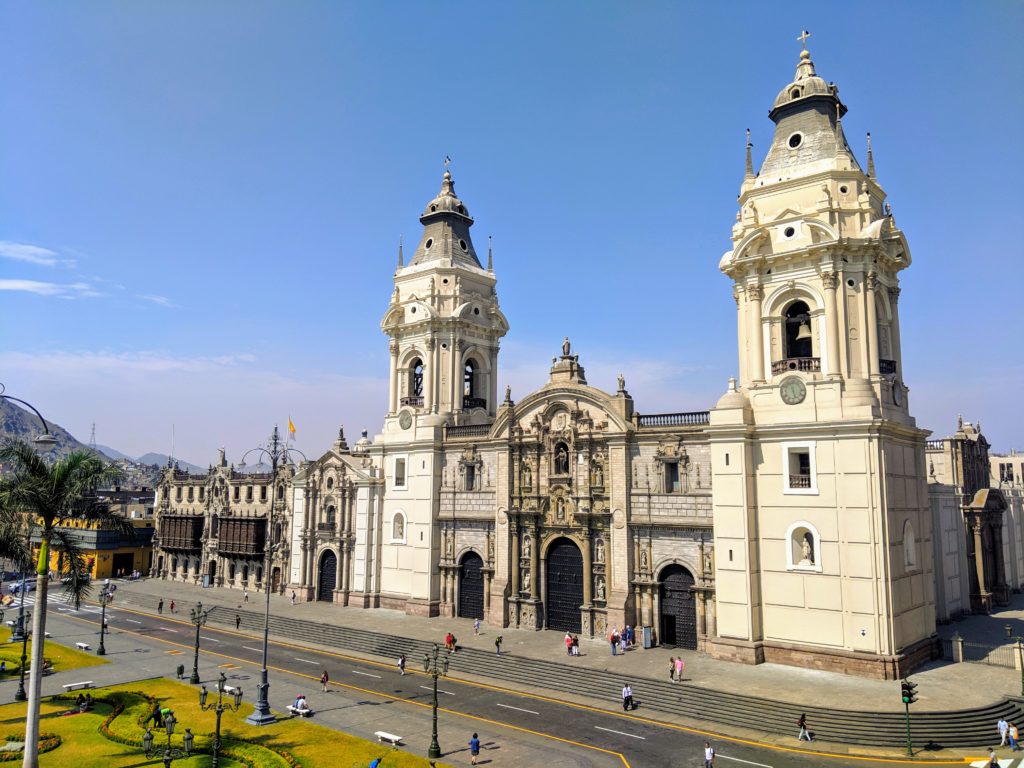
Lima
When looking online there’s a lot of negative talk about how dangerous Lima is, in particular around the airport with respect to theft and muggings. However, again we didn’t find this to be the case and it goes back to the concept of just being a sensible tourist and not flashing your bits (phone or wallet) around unnecessarily. We caught an Uber to our hostel which was located in the Historic Centre of Lima. Most online advice talks negatively about all areas of Lima except for the affluent Miraflores or Barranca which is supposedly where tourists should stay. But we found the Historic Centre to be quite nice and local to a lot of the places we wanted to visit. The hostel (Lima House) was also very nice and the staff were extremely welcoming and courteous here.
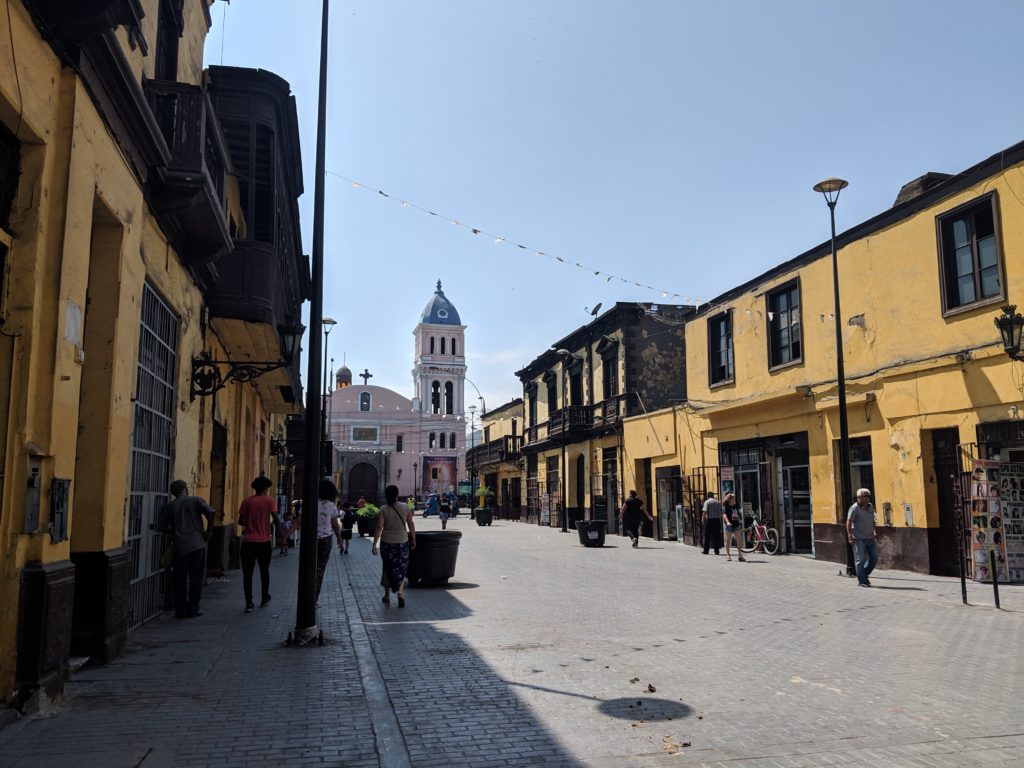
Walking Tour– the next day we were walking around the centre and bumped into a nice chap who offered to do a free walking tour (well this was his job – he wasn’t just a nice chap who took time out of his day to do it). So, we said ‘why not!’ It started off with just the two of us and gradually got bigger as he found tourists from Germany, Jamaica and Suriname, but we were happy with the amount of attention we got.
We visited the Lima Fountain which on Peru’s Independence Day gets filled with Pisco Sour instead of water. This is the national drink of Peru and worth trying if you visit – better yet visit on their Independence Day and get it for free! We watched the changing of the guards at the Presidential Palace, saw a supermarket that had been converted from a Theatre (you could see where the stage used to be), and walked inside the San Pedro and San Francisco Churches where we saw a lot of people queuing for confession (and it didn’t look like they were just going to confess about how much Pisco Sour they had consumed at the last Independence Day)! These are free walking tours but of course these guys work for the tips so always nice if you can give them a little something.
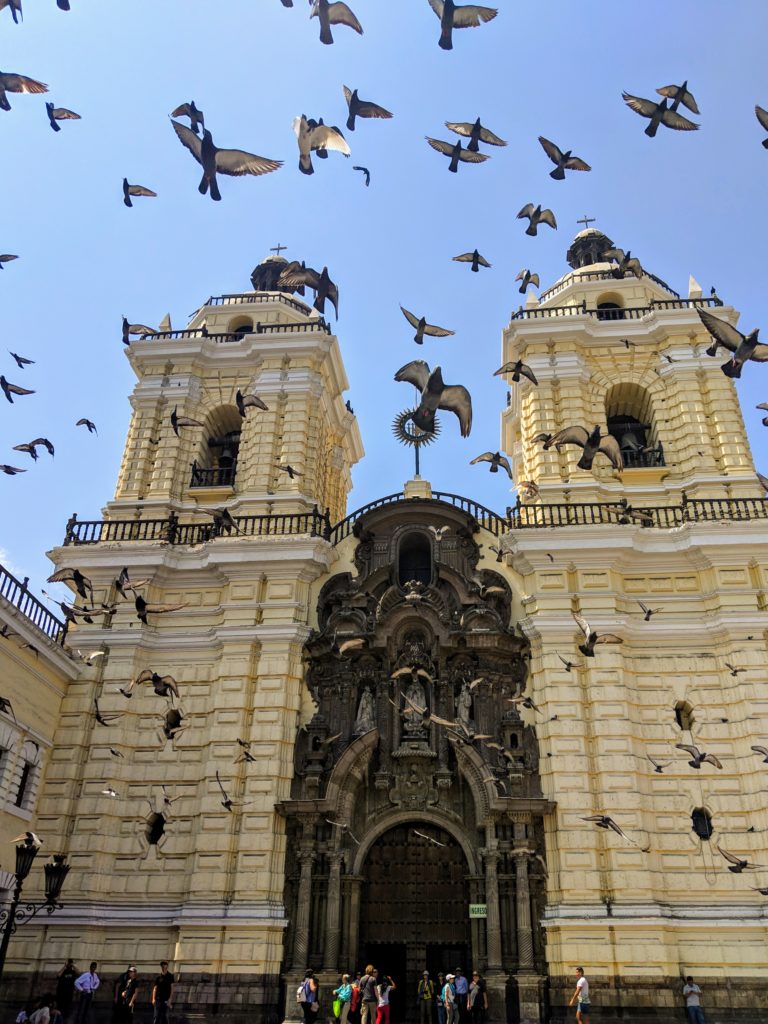
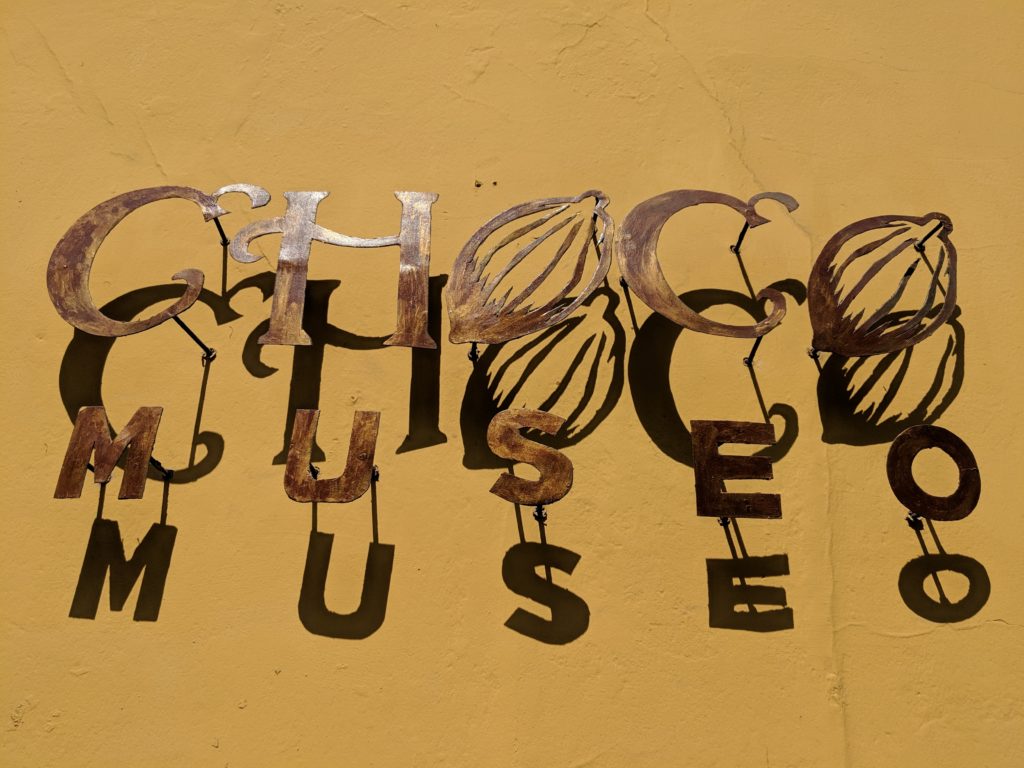
Catacombs– The catacombs are located in the Basilica y Convento de San Francisco where about 25,000 bodies are believed to have been buried in the crypts filled with skulls and bones. Some people might find the experience a little claustrophobic, but if you have travelled to Kiev (see our previous blogs) and walked under the city of Kiev for over an hour then this really is a walk in the park. Many of the people believed that having their bones lay to rest here would bring them closer to God.
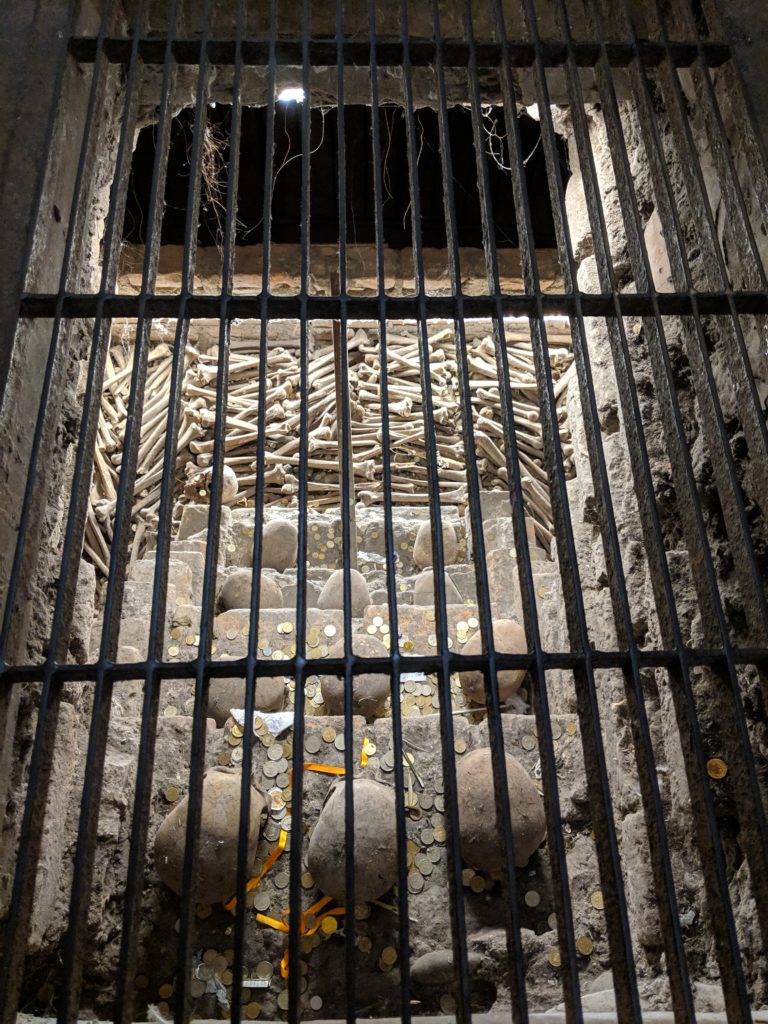
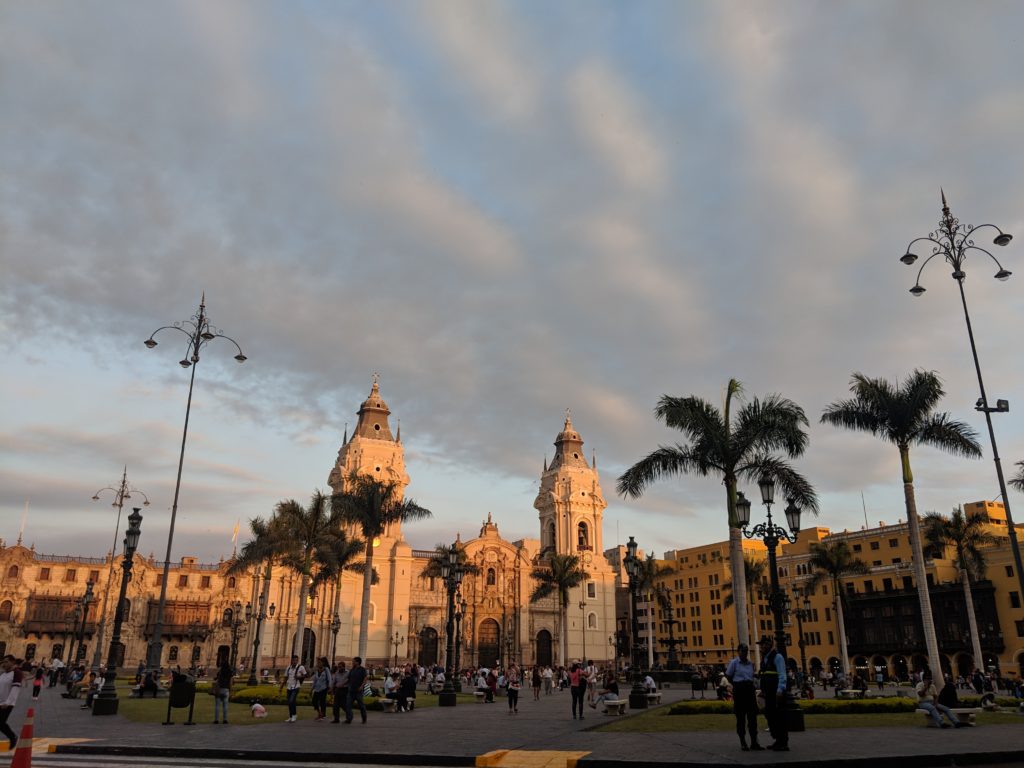
The Light Show– Circuito Magico Del Agua; there is an interesting little light show at a park with fountains in the Historic Centre which starts at varying times in the evenings and lasts about 20 minutes. Worth it for a cheap price if you are staying in the area or are around for the day. As with anything, message us if you do want more details on this or any other attractions.
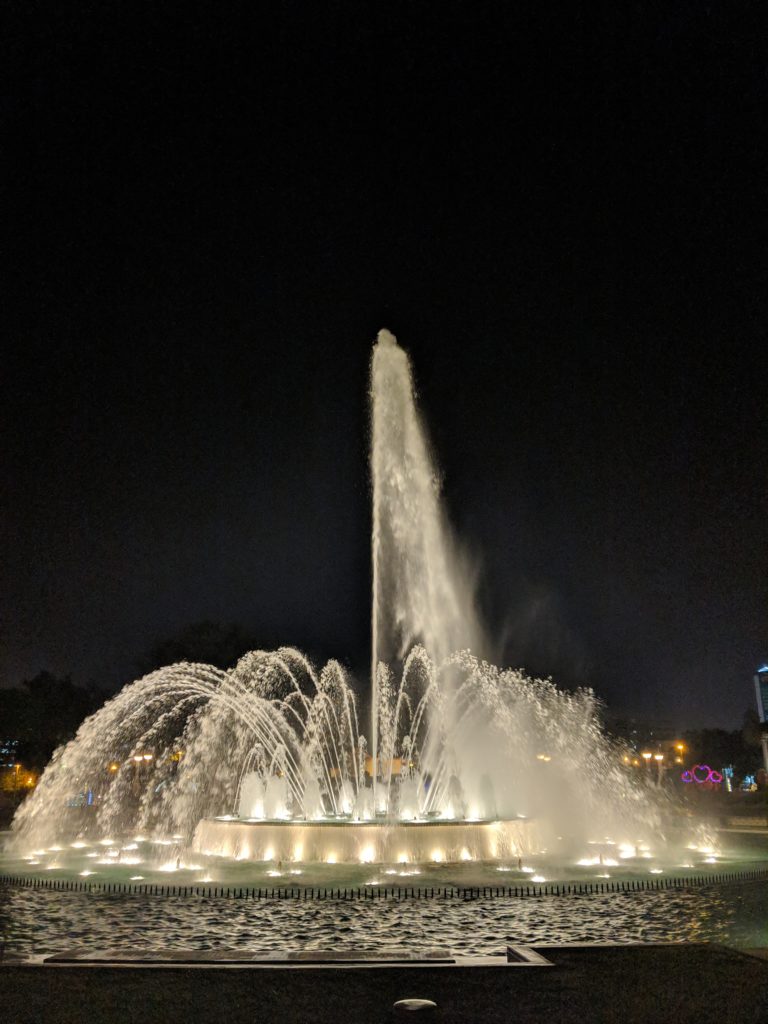
Miraflores & Barranca– the next day we became conventional Lima tourists and went to the affluent Miraflores and Barranca districts. We took a walk by the coast, glimpsing the pacific coast once again, ate ceviche (fresh raw fish in citrus juices) and walked through a few parks (Parque John F Kennedy and Parque del Amor). We also took a wander to the MATE Mario Testino gallery which included numerous photos of western celebs (many nude) and some of Princess Diana (supposedly her last photoshoot). We noted that like in Brazil, it seemed optional for cars to stop at pedestrian crossings rather than mandatory. Welcome to South America!
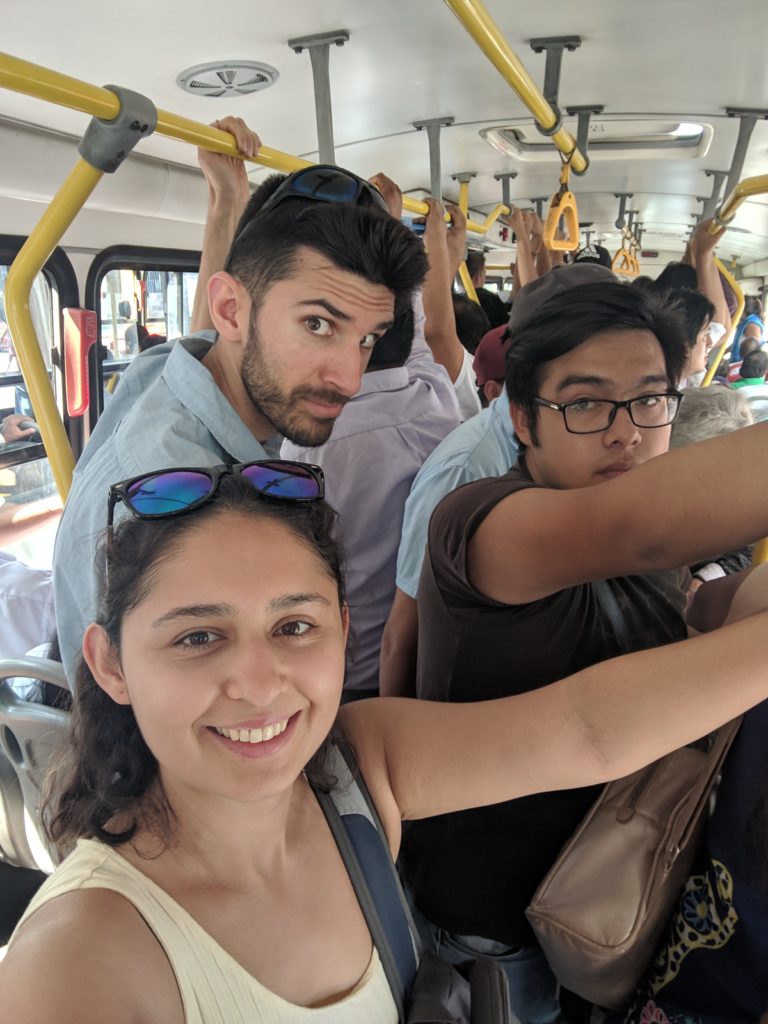
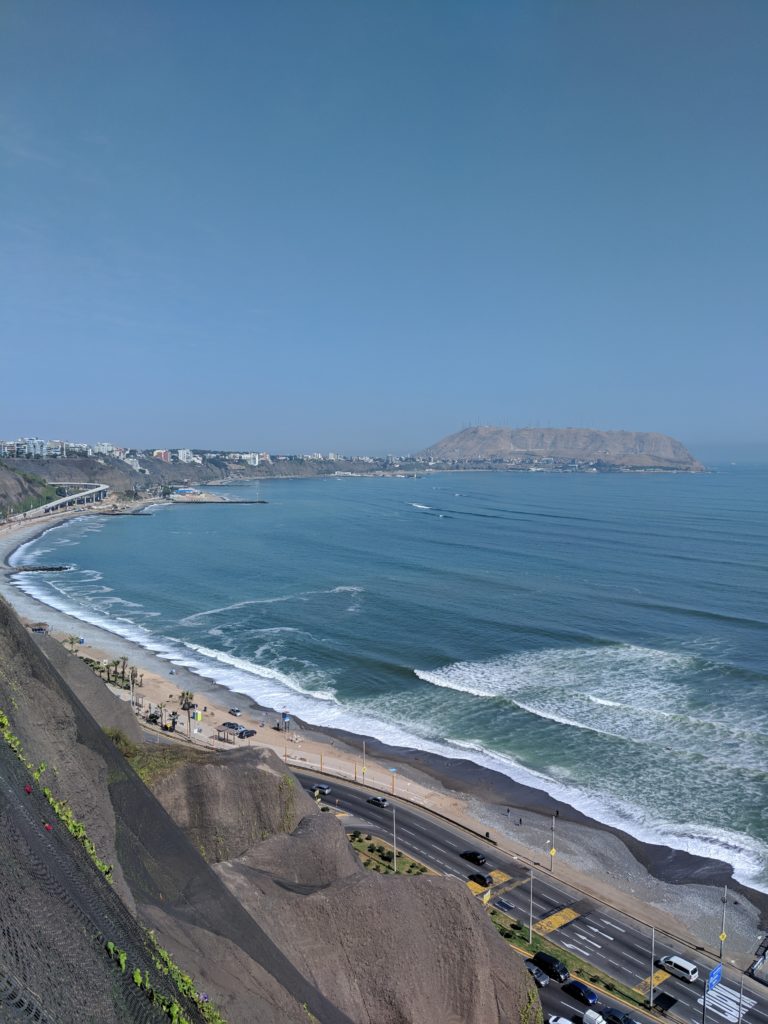
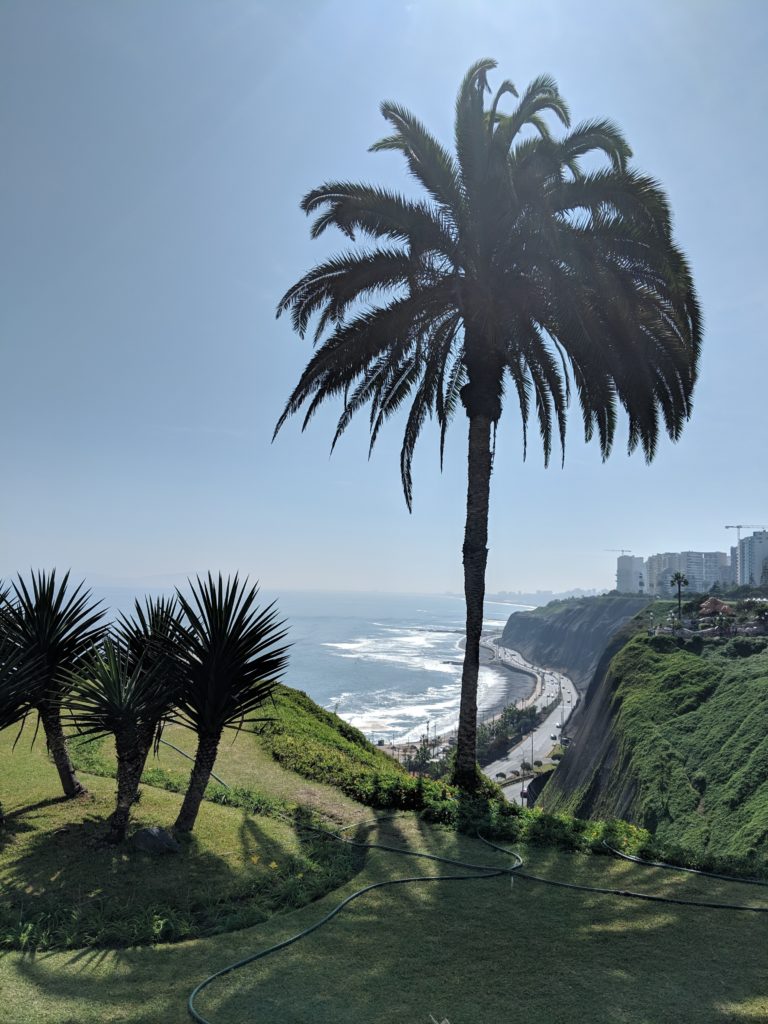
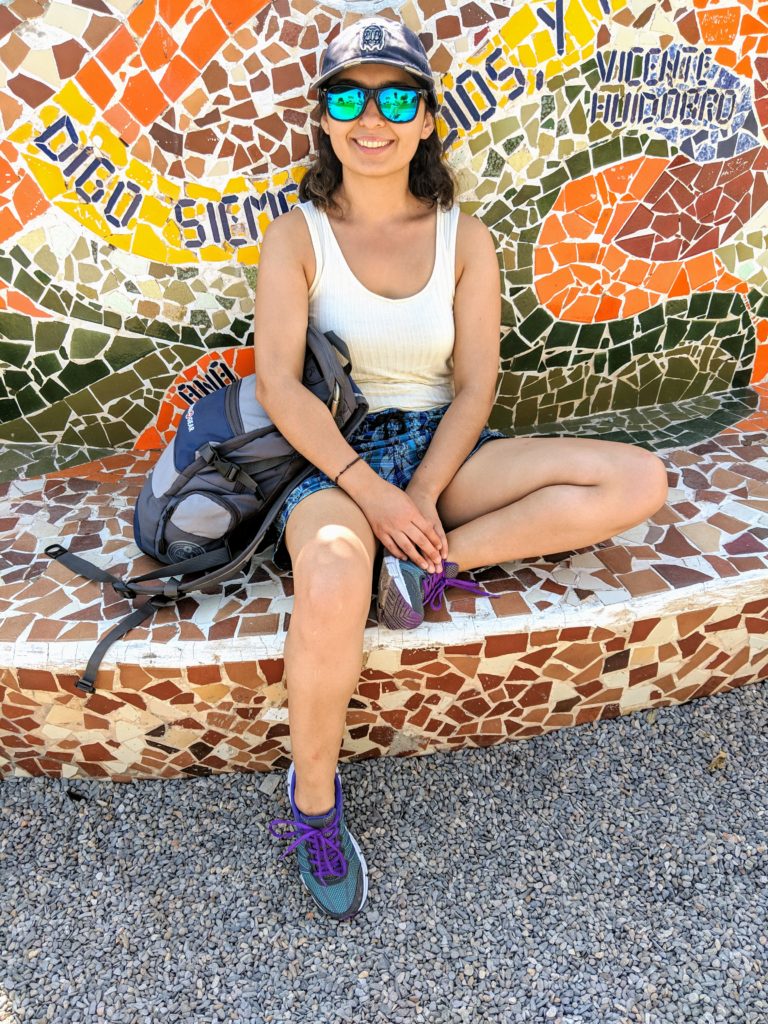
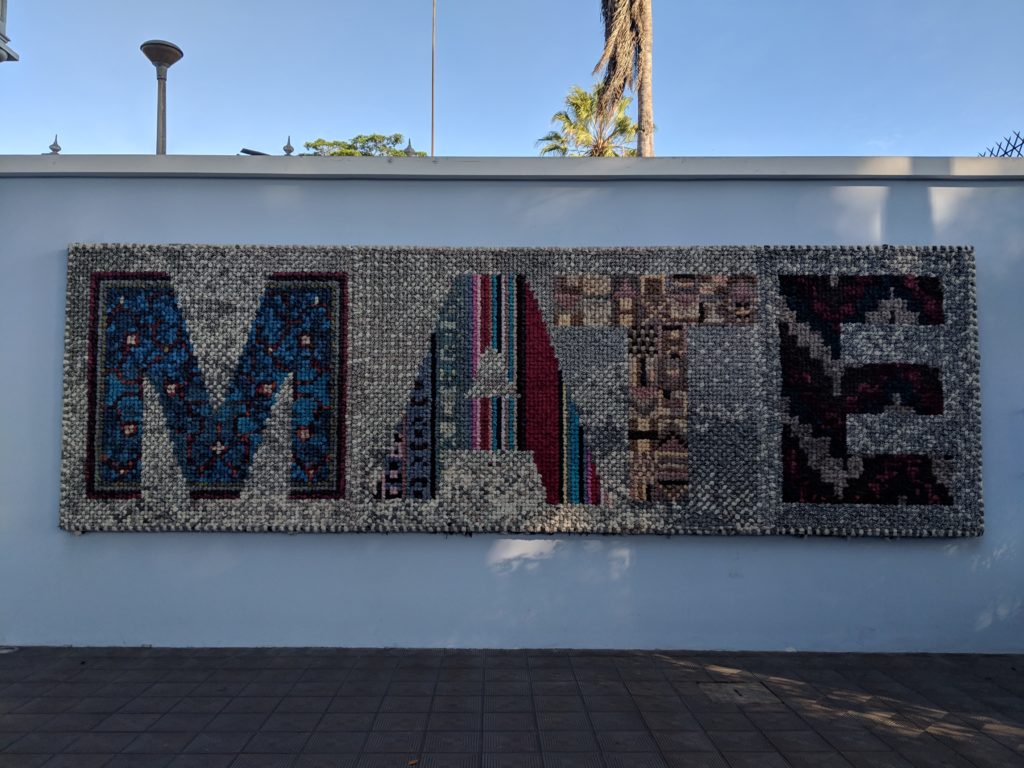


Cusco
Next stop on the list was Cusco. Once the centre of the Inca empire, Cusco is located at an elevation of 3,399 m. We arrived by plane from Lima which was a very quick flight and began exploring the city. We noticed quite quickly that the air was thinner, and we were having to gulp for breaths while doing simple walks around the town.
We soon learned its common practice to walk around with coca leaves (grown locally) in your mouth as this can help you with the altitude. Alternatives to this are using the leaves as a tea infusion and drinking that, having coca sweets or simply taking altitude sickness medication. We did all three as we wanted to make sure we didn’t suffer at all on the trip and would be able to complete our trek to Machu Picchu without incident. It’s also common practice to arrive in Cusco a few days before trekking to Machu Picchu as this helps you to acclimatise to the higher altitude so you can get used to breathing with less air. Funnily enough, it seems that long term smokers do ok at altitude (the irony)!
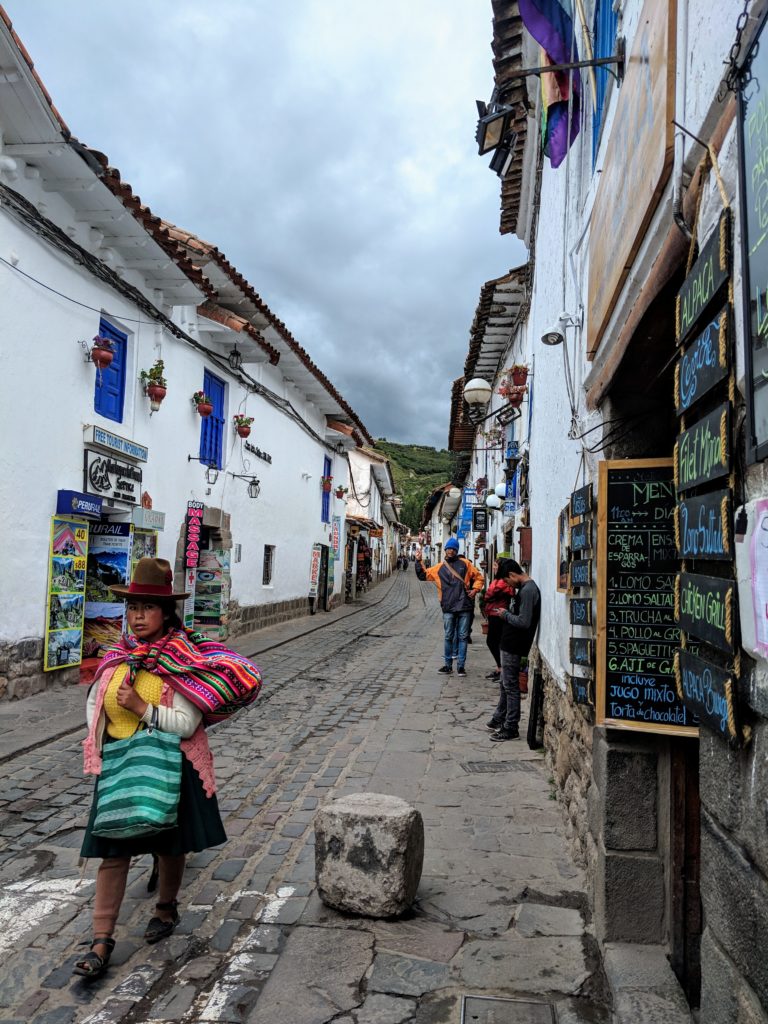
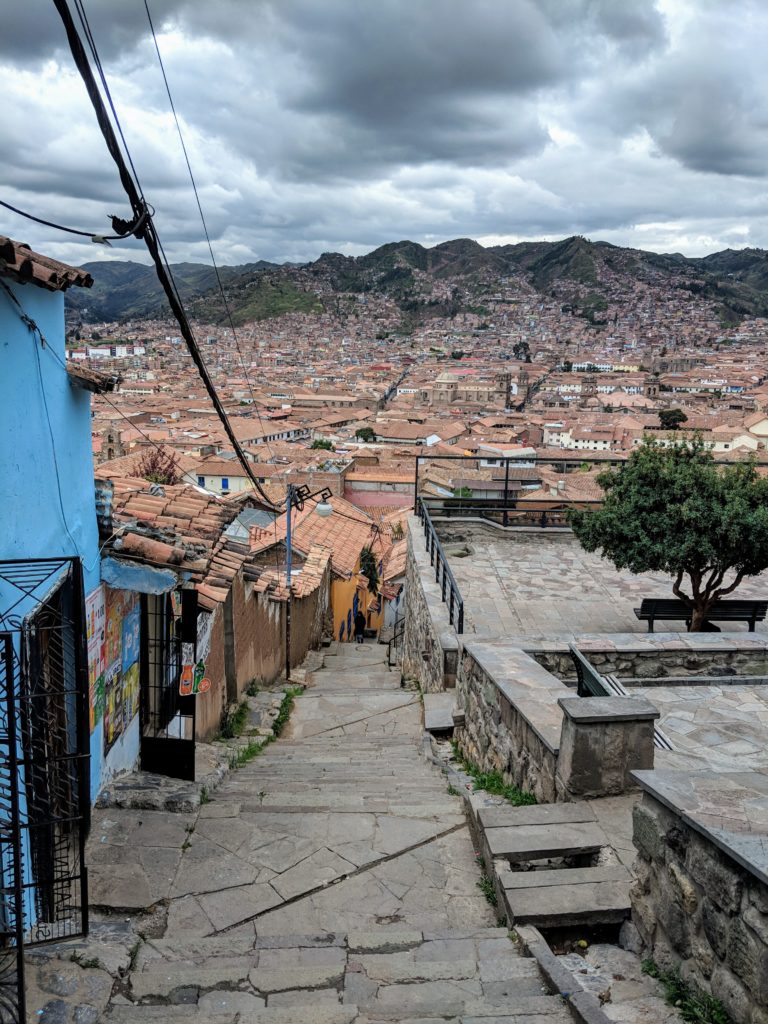
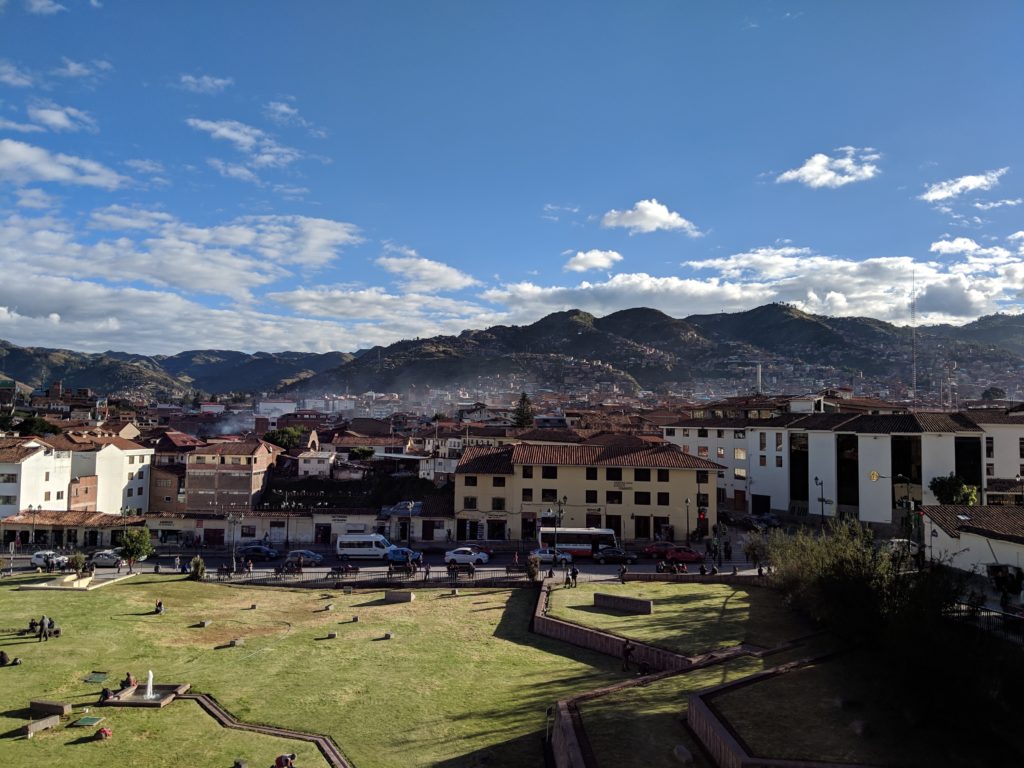
Around the City – We joined a free walking tour where we learned how Pisco Sour was made (ingredient include Pisco, syrup, egg whites and lime juice), watched a Sharman perform traditional music using hand made instruments and Firuza got a kiss on the check from an alpaca (yes that is really an alpaca in the picture, Shri’s lack of shaving didn’t get to that crazy a level!). We also went to a market known as San Pedro market (there seems to be San Pedro’s all-over Latin America) where we bought some souvenirs. There were a lot of people trying to push their products and Shri instead of just saying ‘no’ cleverly responded in Spanish to one woman in a food section saying, “No gracias, estoy lleno”, meaning “No thanks, I’m full”. It was only when Firuza asked him to translate and after she explained that they’d been in a section for bird food and cat food that he realized his mistake. It helps to pay attention to what you’re refusing! What must that woman have thought…?
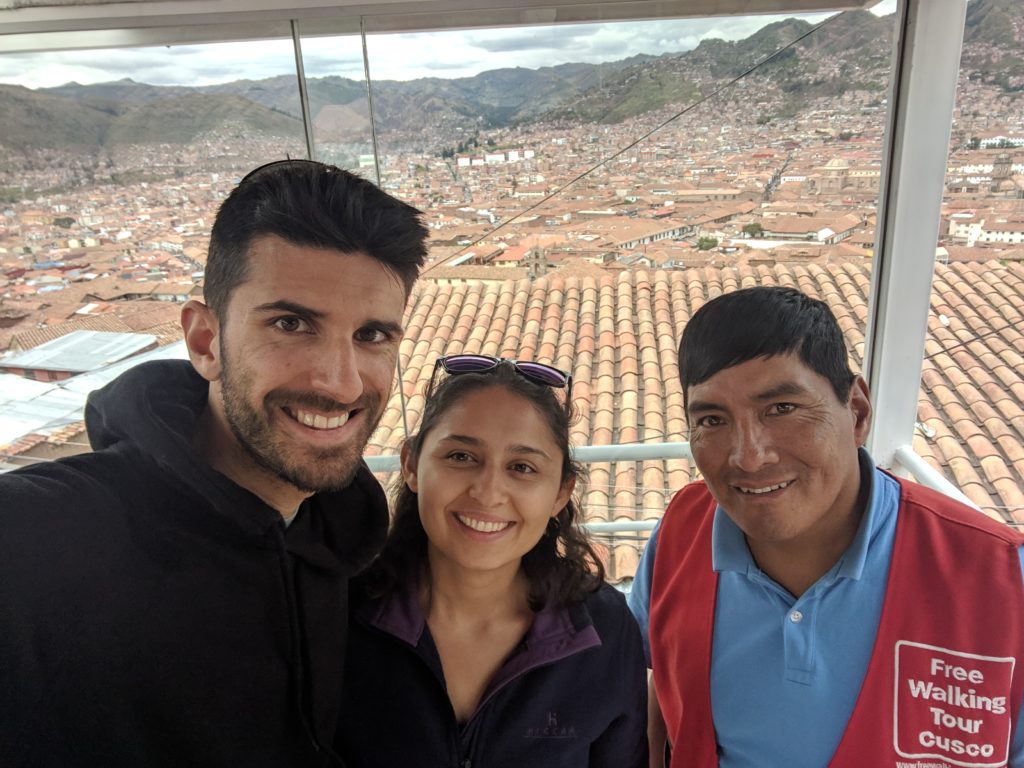
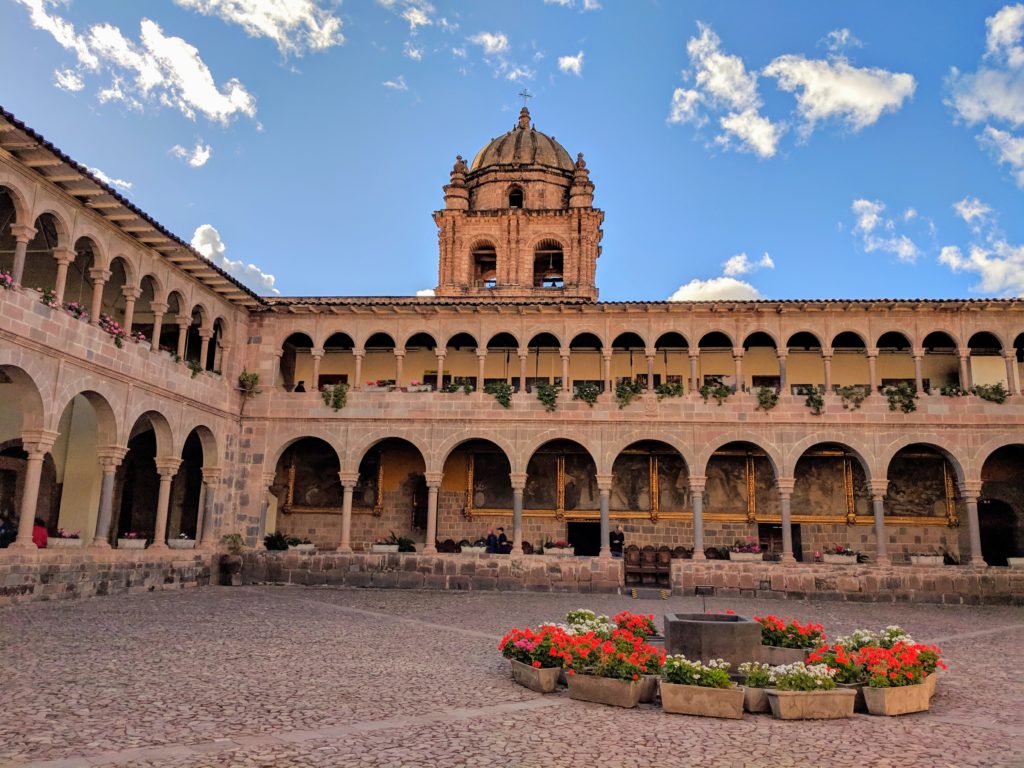
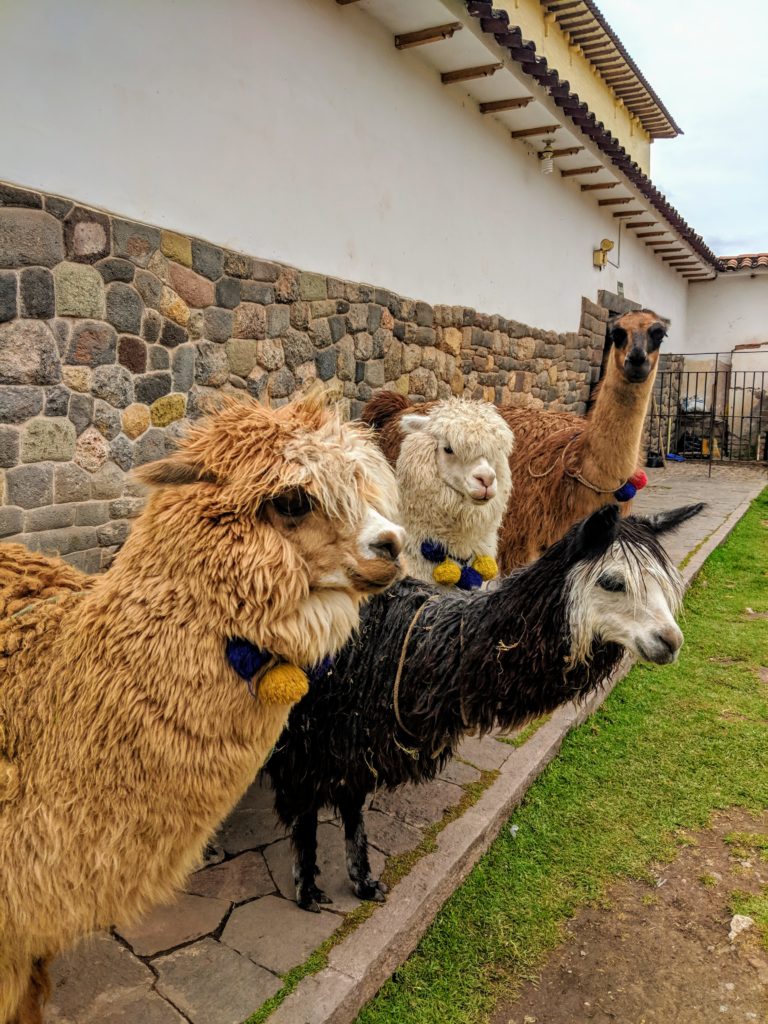
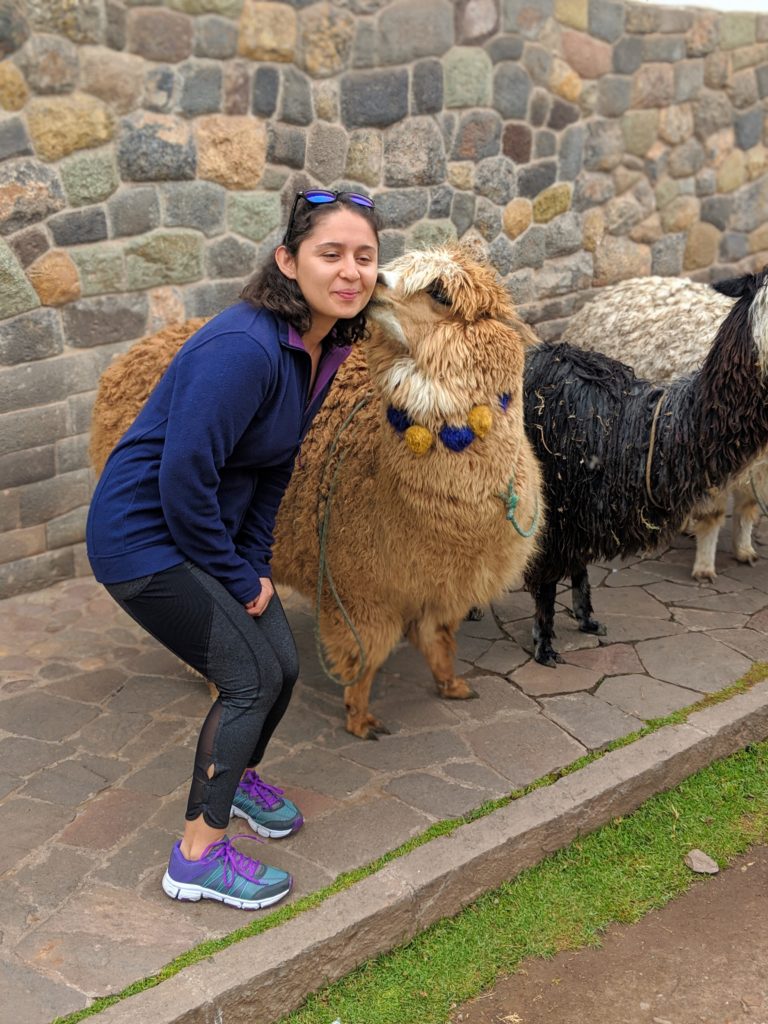
Rainbow Mountain – we decided to do a day trip to Rainbow Mountain from Cusco the day before we began our trek to Machu Picchu. This turned out to be a good idea as it functioned as a training day for what was to come. Rainbow Mountain has an altitude of about 5200 m above sea level. This was the highest elevation we’d been to in our lives never mind on the trip and we definitely felt the effects.
It was an early start that morning, we had to wake up at 2.30am, since we were leaving at 3am. A minivan took us most of the way, but we still had an hour and a half worth of climbing to get to the summit. At the approach to the summit you could see all the people around you start to slow down for the vertical ascent. You don’t need to go to the cinema to have a zombie-like experience. Just go to rainbow mountain and watch people try to get up it (obviously the cinema is more inconvenient compared to going to Peru to do this). Everyone has to move so slowly due to the thin air, they basically stagger upwards like a zombie, one foot after the other struggling for breath and occasionally looking around just to make sure everyone else is struggling as much as them. For those of you who are interested, you can have your passport stamped when you reach the summit for about 2 soles, although this caused somewhat of a decision for Firuza whose passport pages were fast running out (she got the stamp regardless in the end).
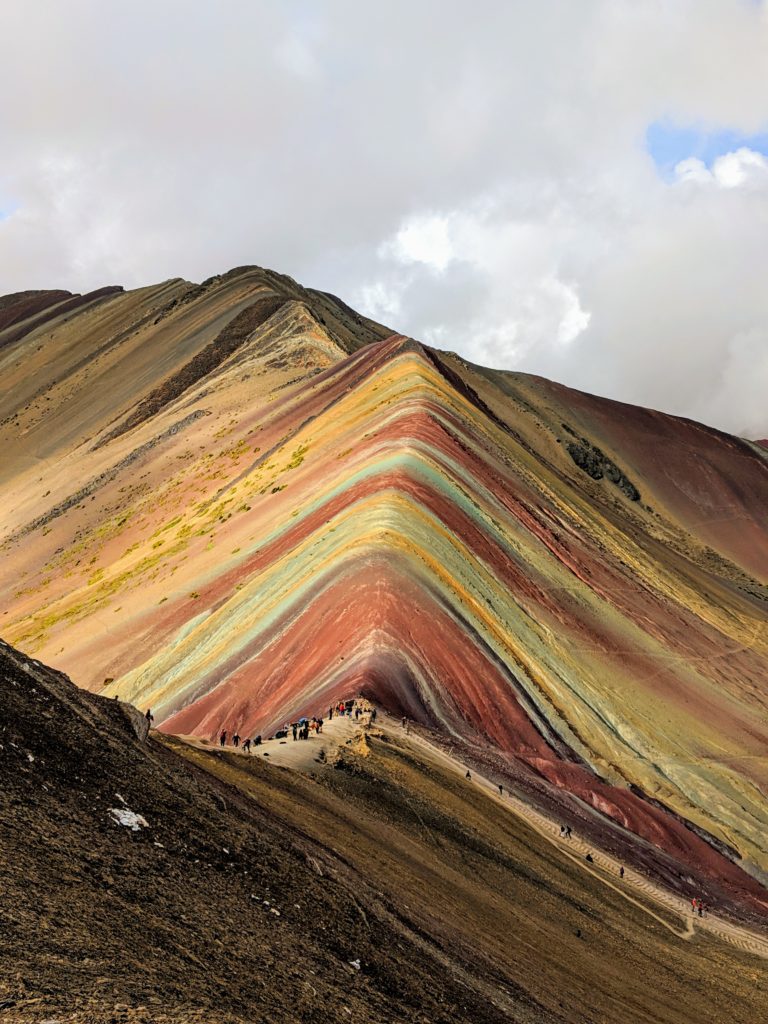
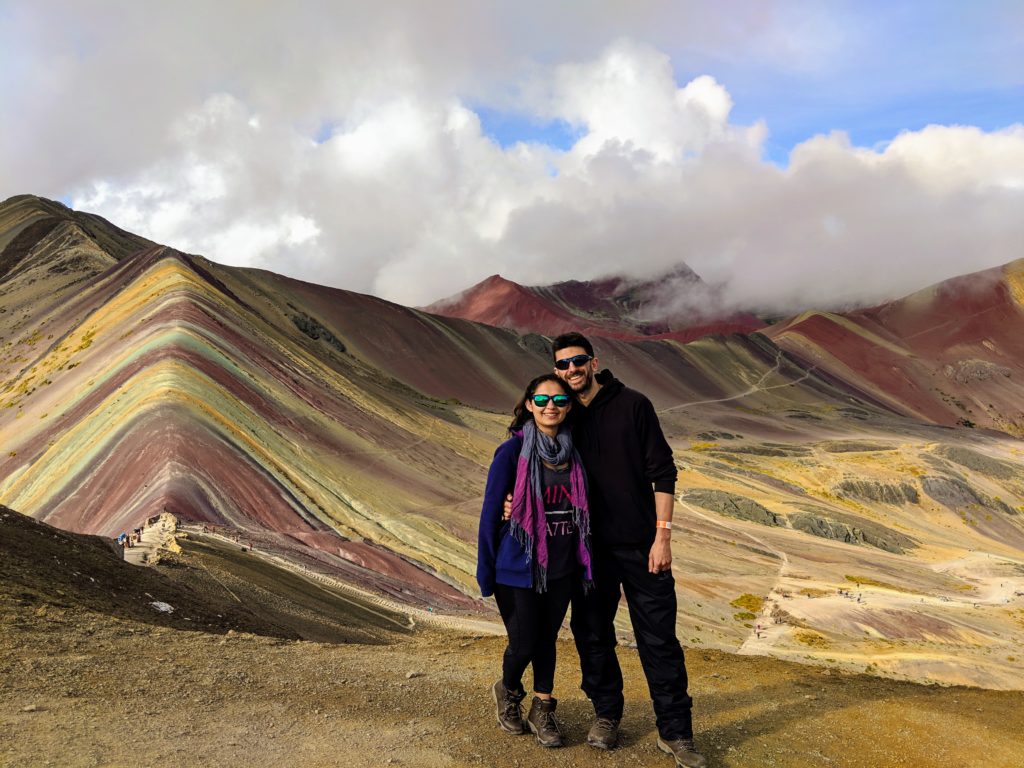
The Red Valley – the pictures say enough about this place. Both Rainbow Mountain and the Red Valley are simply stunning when looking out across the landscape, the colours resulting from the mineral rich terrain. The sad fact we learned on the trip was that the mountain and this valley had only been discovered about 3 years previously. The group couldn’t understand how it had gone undiscovered for so long until the guide explained that the only reason it was now visible was due to global warming. For generations before, it has been snow-capped and what lay beneath remained unknown to the world.
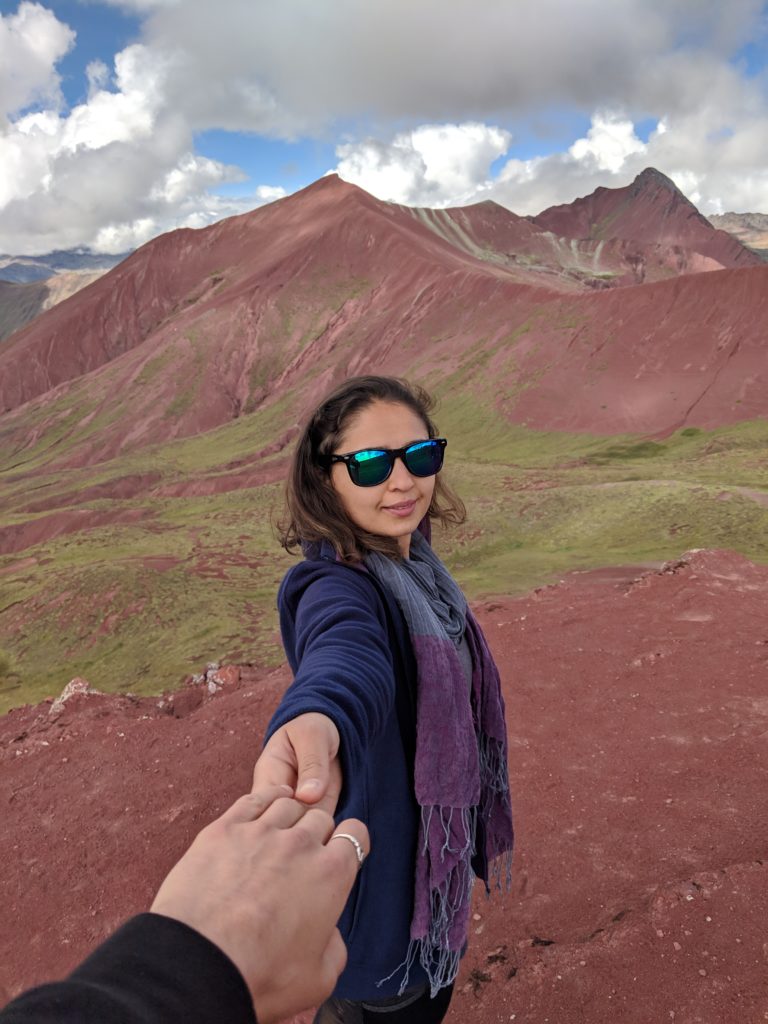
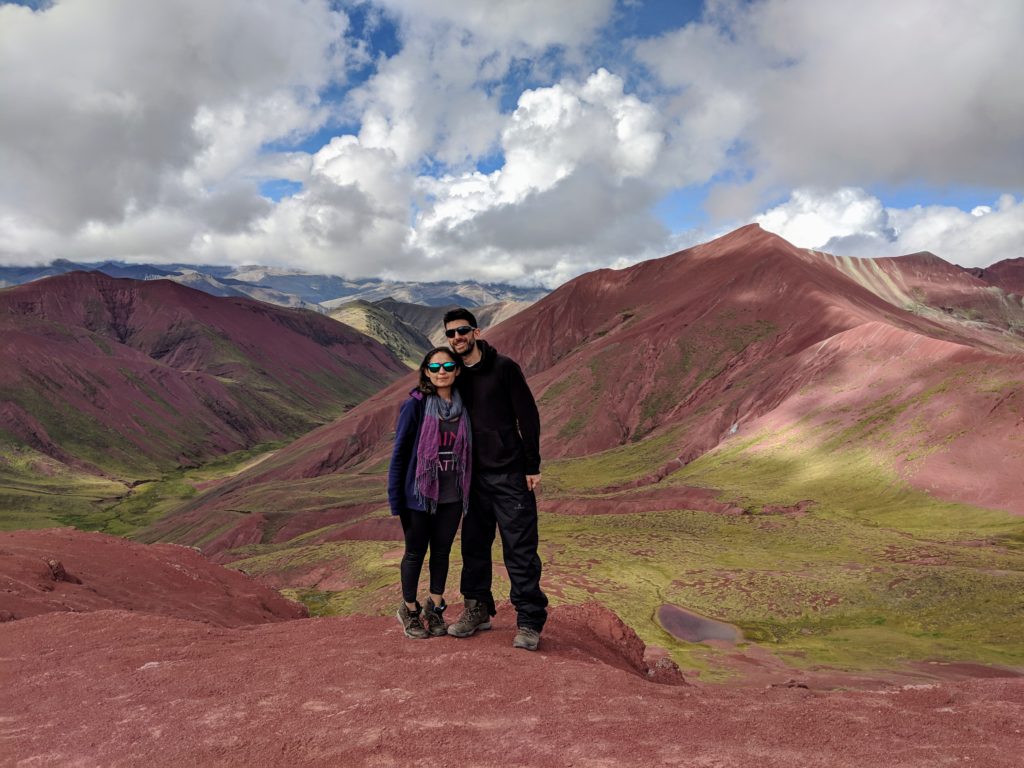
No Deviation from the Protocol – We stayed at a hostel called Pariwana Hostel in the centre of Cusco. This place had great facilities, entertainment and even had a ping-pong table in the courtyard. It was a bit of a party hostel, so we had people coming back into the dorms when we were waking up at 2.30am to go on our trek to Rainbow Mountain but nothing that some ear buds and a sleep mask won’t take care of. What we found interesting about the Cusco region was that while everyone was very friendly and courteous, there seemed to be an inability to deviate from the standard procedure or normal operations by local staff.
One such example was in the hostel when we did our laundry. We had provided it the previous day and when we went to collect it we were told that it probably wasn’t ready yet. We came back later and were told the same thing. So, we had a look in the completed laundry section and found the bag with our clothes. But the staff didn’t want to give it to us as it was marked as someone else’s as there had clearly been a mistake when they were taken in. It took several minutes of arguing to get our laundry back as they maintained that this was marked as someone else’s. Shri had been tempted to see if this other batch turned out to have more interesting clothes than ours but Firuza put her foot down and we managed to get the original laundry back in the end with our actual clothes.
Another example was at a small restaurant just outside the city where we had breakfast. There weren’t many gluten free options for Firuza and so she decided to go for an omelette. However, the woman serving said this was not possible and they couldn’t do omelette even though other people were being served fried eggs and scrambled eggs and orders for these were still being taken. When she came back (she kept leaving hurriedly) we asked why the omelettes were not available and she said she had no vegetables and so an omelette wasn’t possible. We explained that a plain omelette would be fine, to which she was very surprised but then went ahead and had it made. So overall this is not a criticism of hospitality or service at all, but don’t be surprised if people seem unwilling to deviate from their normal procedure or process as we met a few tourists who had similar encounters. Just be prepared to explain exactly what you want.
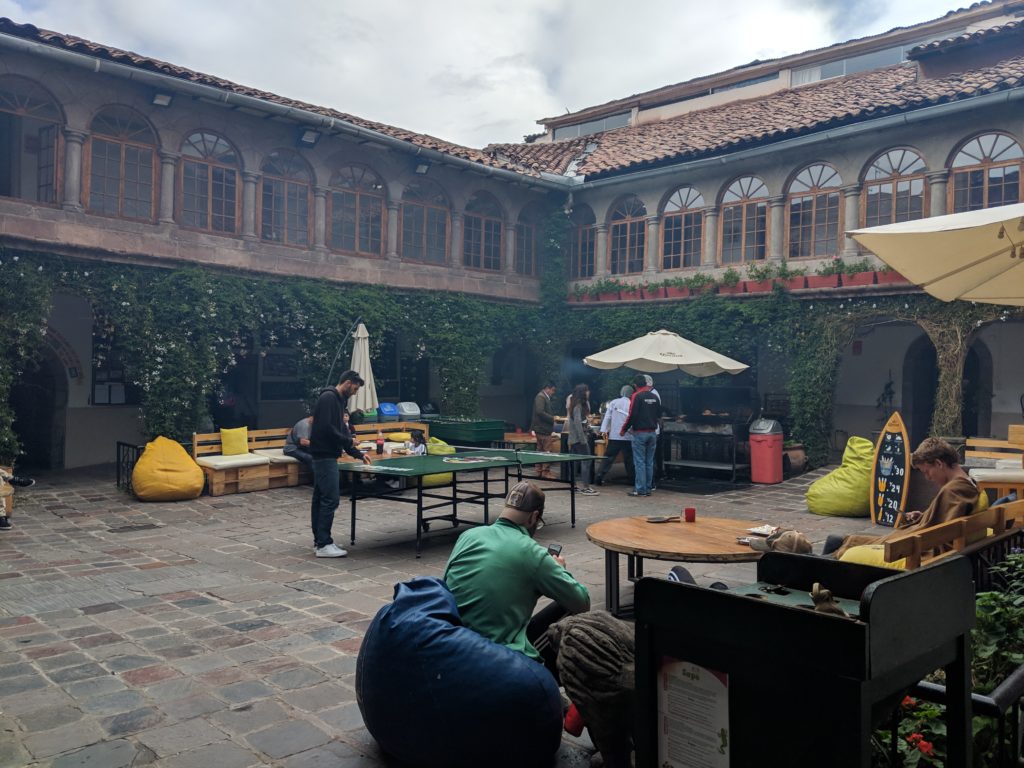

The Salkantay Trek
The epic portion of the trip had arrived. We had opted for a 4 day/3-night trek from Cusco to Machu Picchu and ended up choosing the Salkantay trek which goes through the Salkantay pass in the mountains. The most famous trail is the Inca Trail which is also the most expensive. If you want to go via this route, you will have to book well in advance as you need a permit to go and there is a limited number per day that the Peruvian government hands out (but very possible if you plan ahead). There are a variety of different trail options so have a look at which ones you feel will be of most interest to you. On our trek, our clothes and bulky items would be carried by mule, so we only had to worry about our day bags and carrying enough water on us.
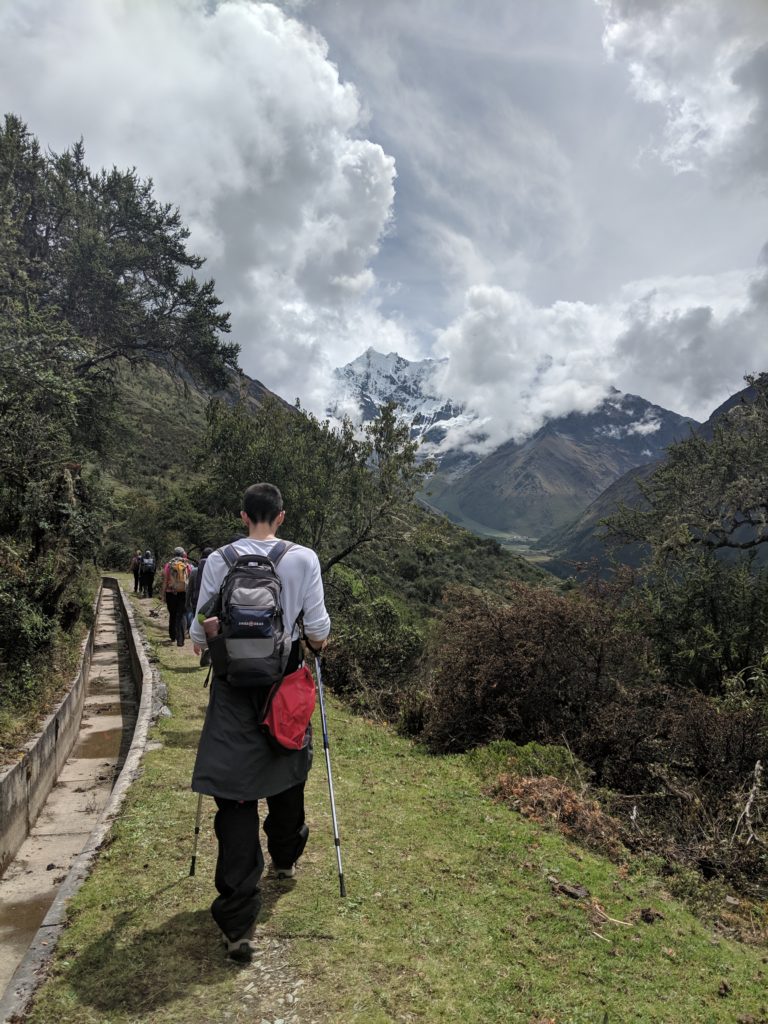
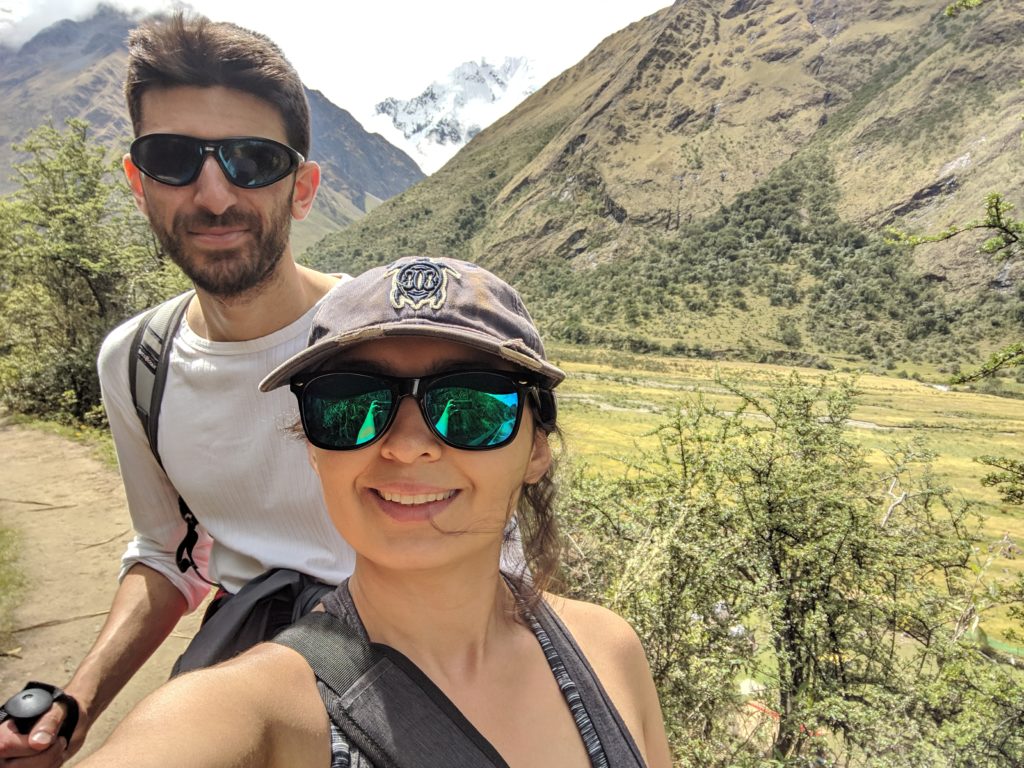
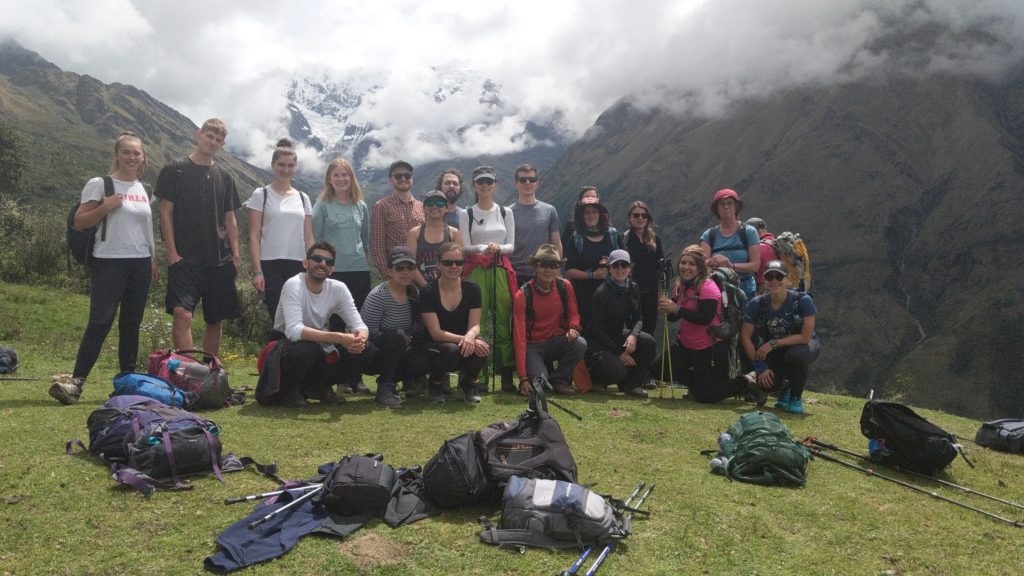
Day 1 – We started in the village of Mollepata, beginning the first of several challenging days on our trek towards the ancient ruins of Machu Picchu. We had a group of 21 people with 2 guides, one who stayed ahead at the front and the other who lingered at the back. Within minutes of beginning we had a number of Andean Condors circling above us – the largest bird in the western hemisphere. Firuza watched them very warily as the guides had said they could pick up a small person if they wanted to. We trudged on, with many people initially avoiding the mud, horse and donkey droppings carefully (although by the end of the trek nobody seemed to care much where they stepped).
We stopped several times along the way before eventually getting to some small huts which would be our base for the night. We spent the majority of the afternoon climbing up to Humantay lake which offers absolutely spectacular scenery of where the snow-capped mountains meet the lake with a magnificent landscape in the backdrop. This was a challenge to get up for us despite the ‘training’ we had done the previous day at Rainbow Mountain, again with the altitude being so high.
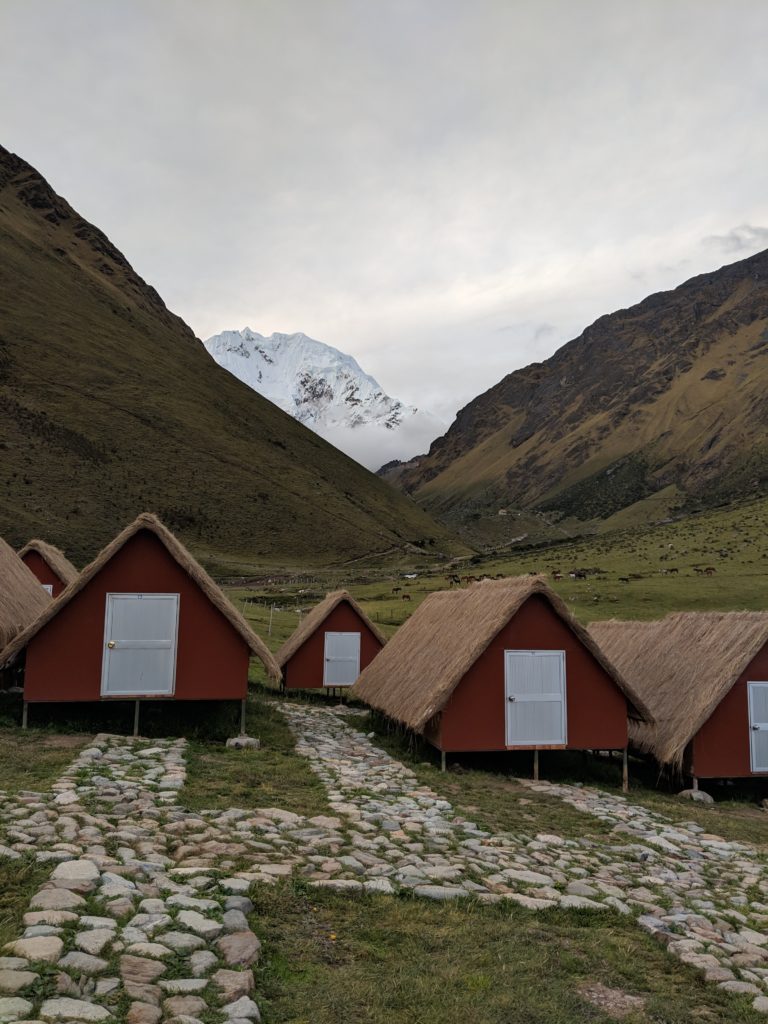
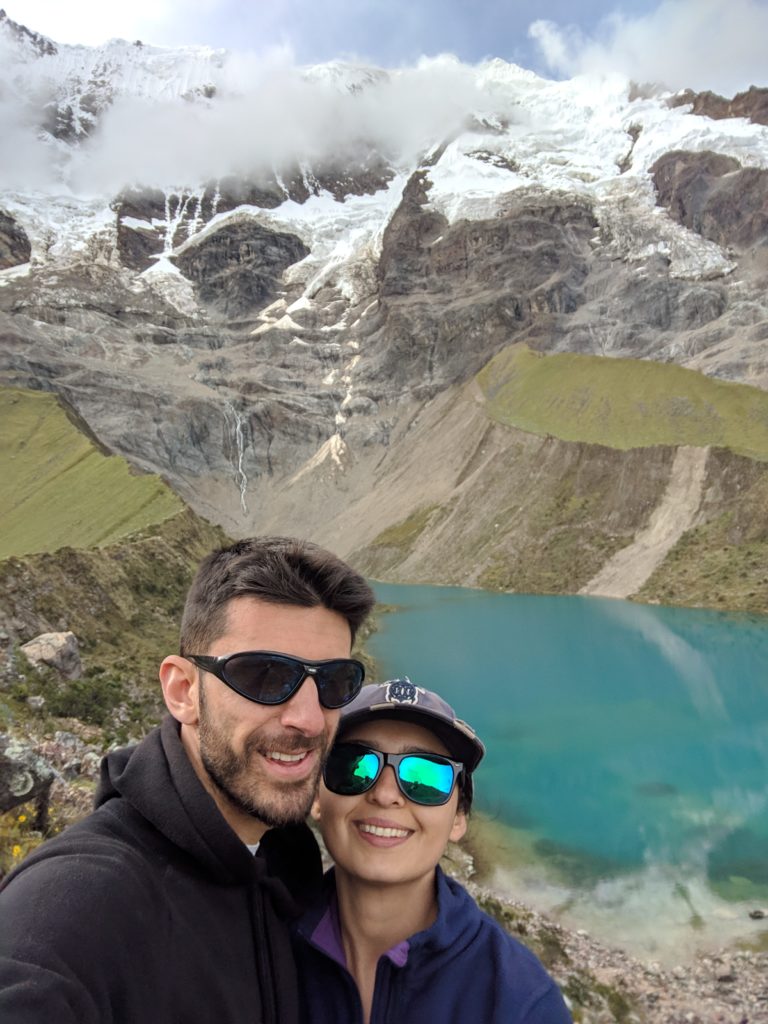
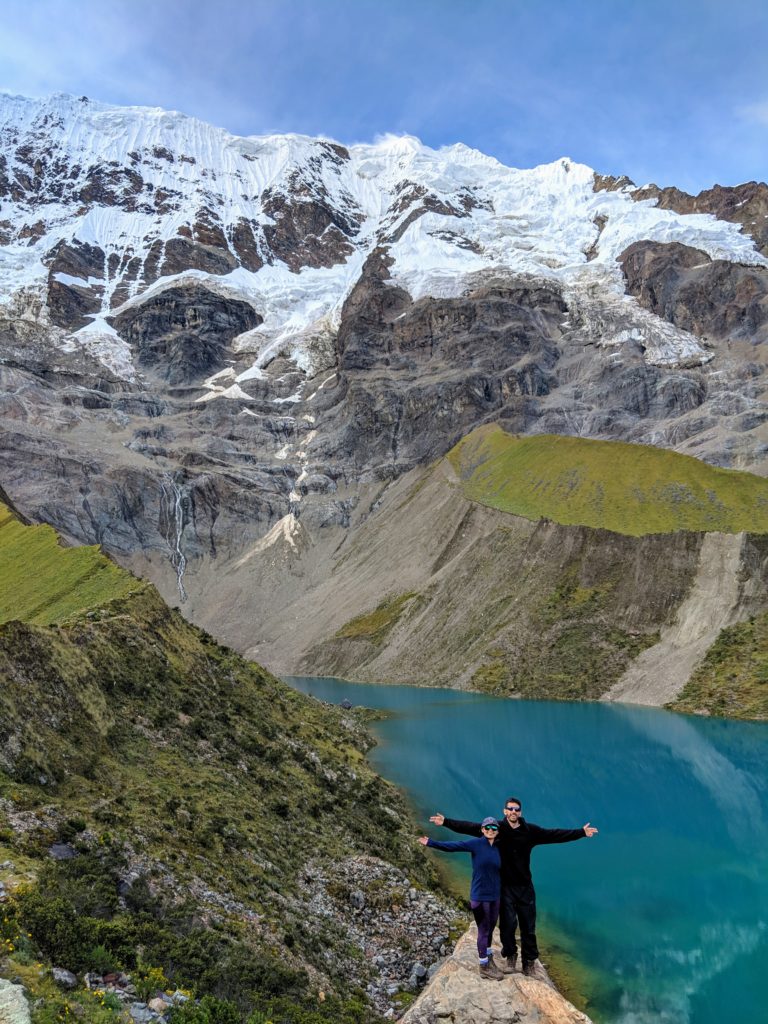
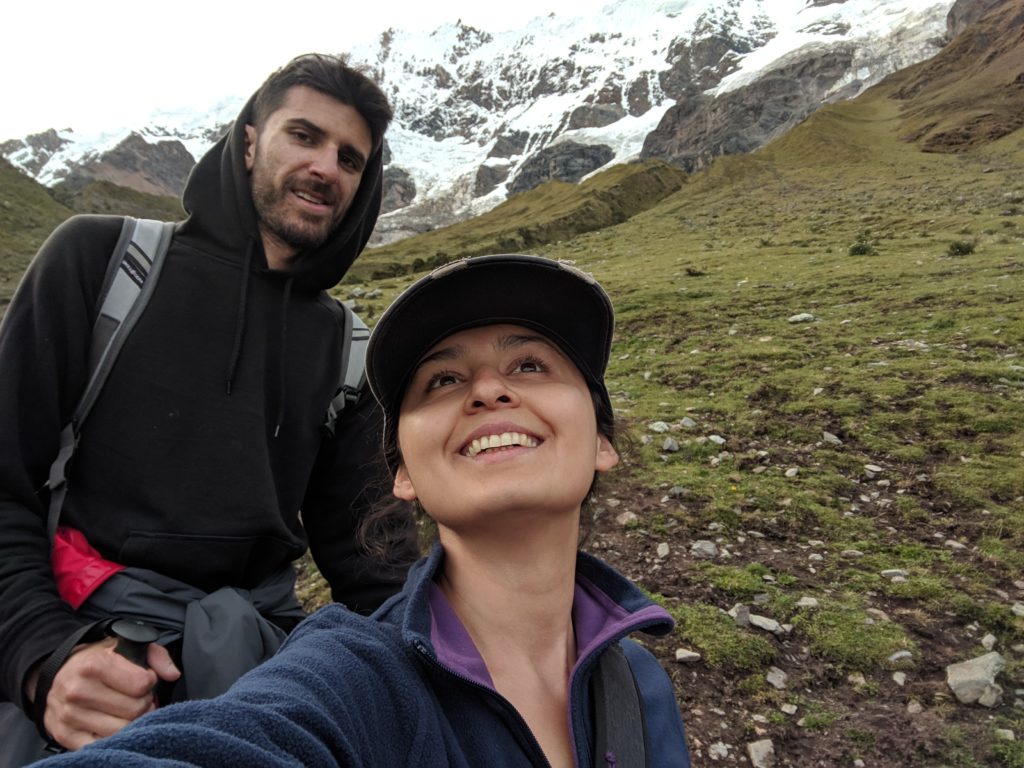
Day 2 – This was said to be the toughest of all the days and would cover multiple terrains. We had endured a cold night at the base of Humantay mountain and the sleeping bags had only just about done enough to get us through the night (two guys who had just met the day previously who shared a cabin had even huddled together for warmth!). We were woken shortly after 4am at our huts and given coca tea to wake us for the day which meant less sleep. Breakfast was plagued by people (mainly the Brits) talking about how cold the night was – why do we love weather commenting so much?
In terms of group dynamics, it was an interesting bunch. Always at the front was a Chinese couple, the man who had done treks in the Himalayas before and was out to impress the guides with his altitude prowess, always several steps ahead of everyone else and eager to get going first after each break. There were a couple of 18 years old from the UK who also kept close to the front, no doubt using their youth to their advantage. We had a pair of older German ladies in the group and on the first day they lagged behind everyone else yet on day 2 they seemed to always be first (much to the annoyance of the Chinese man). In the morning we had all been offered the option of going by horse for the first part of the day and Shri was convinced that the ladies had taken this option. But as the day went on, several theories were being formed throughout the group, with some people suggesting they ran, others believing that they had conserved their energy the day before and some even suggesting they left an hour before the rest of the group. Turns out the last suggestion was correct, and they were given a head start after each break and lunch in order to gain ground. Good on them for refusing the horses and finding a creative way to still trek without impacting the group. Of course, this didn’t sit well with our Chinese friend who kept asking if he could head off early but was refused each time by the guides (probably to their amusement). The rest of the group was made up of Brits, Brazilians, Central Europeans and two American girls who often lagged behind, but they claimed this was related to the scenery and wanting to take pictures – we’ll give it to them 
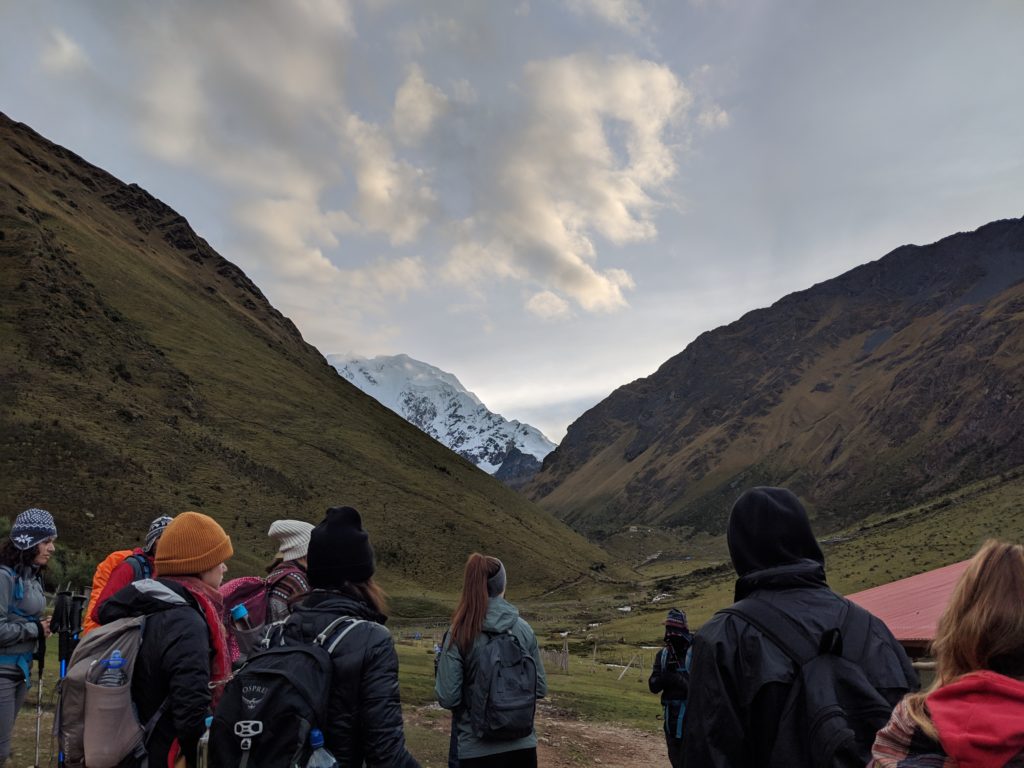
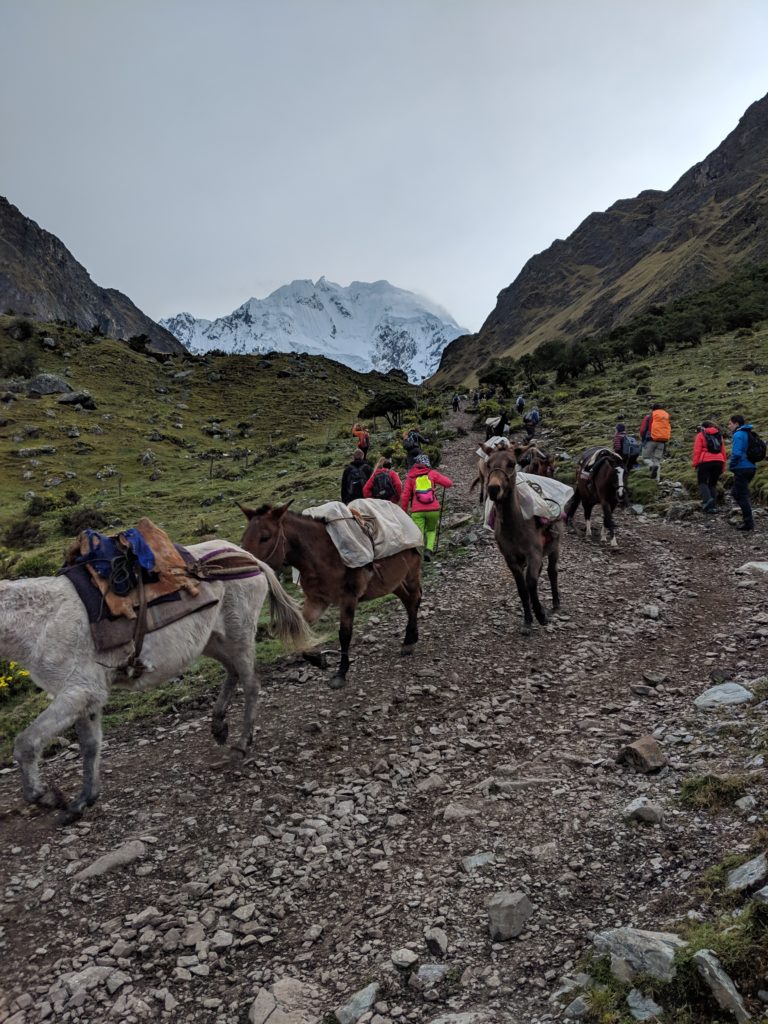
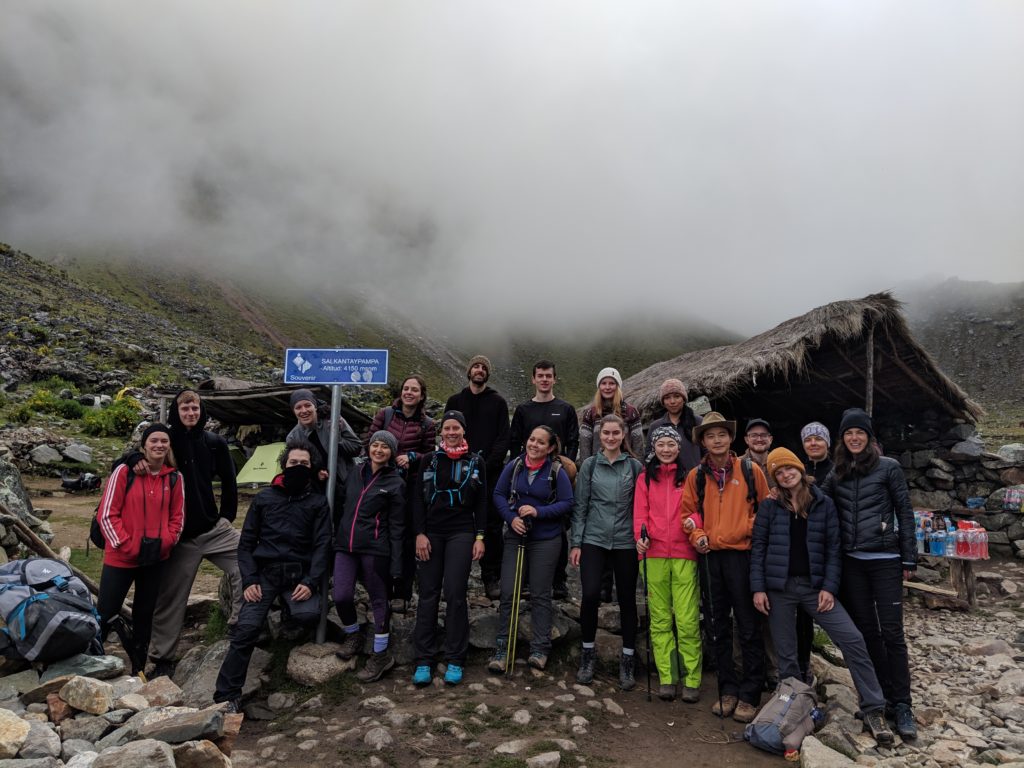
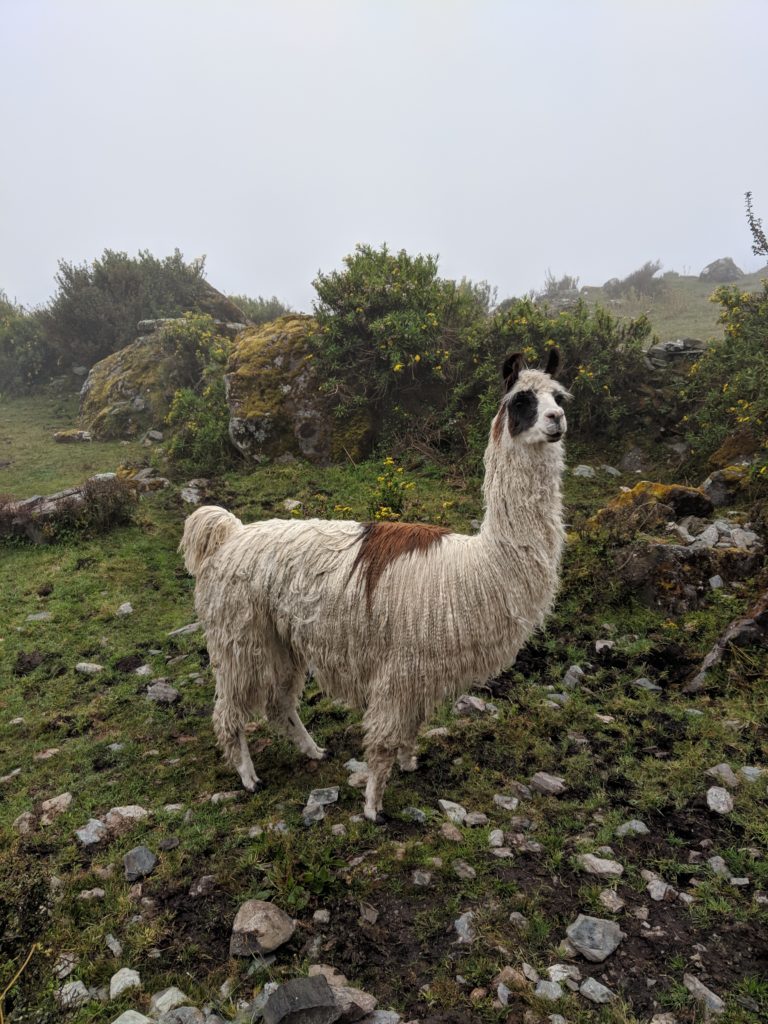
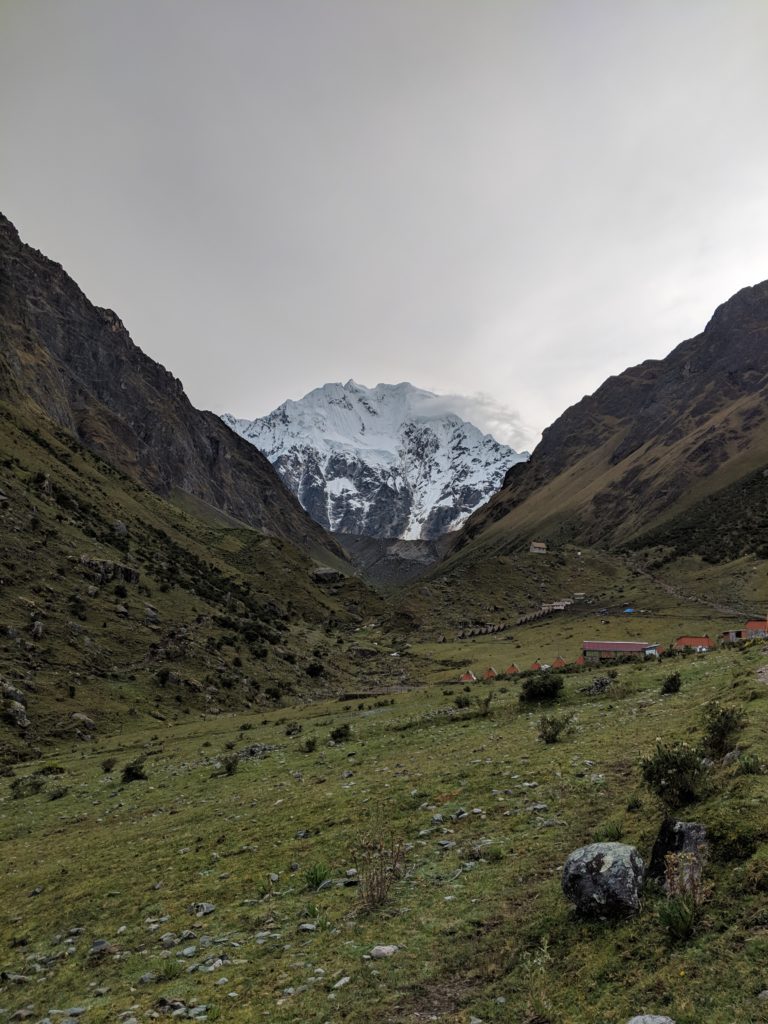
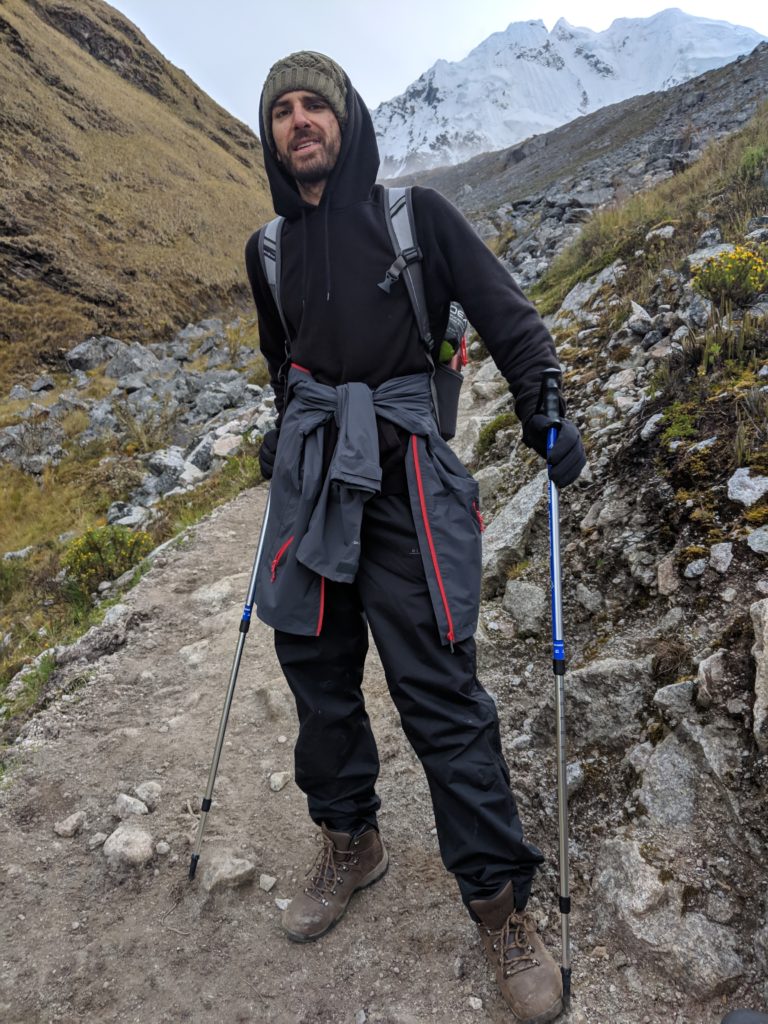
The longest stretch of the day was getting from one of the morning break spots to the lunch spot through the Salkantay pass. As everyone went at different paces, everyone got there at different times, but no food was served until the entire party had arrived. This meant that those who arrived first had to wait for almost an hour (including our Chinese friend and the German ladies). Whether it was impatience, the altitude or lack of eating for so long, some people went as far as to start talking about human sacrifices with reference to the last person to come through the door (it was probably also on their mind due to the information we’d been given about Inca sacrifices).
After lunch it was a solid 3-hour trek through the high jungle to get to our cabins for the night. The scenery changed drastically from glacier covered mountains to jungle trees and the temperature and humidity also picked up. We were greeted by the lead guide when we eventually arrived, and our Chinese friend had already had a shower. We opted to skip the cold shower for the night on this occasion.

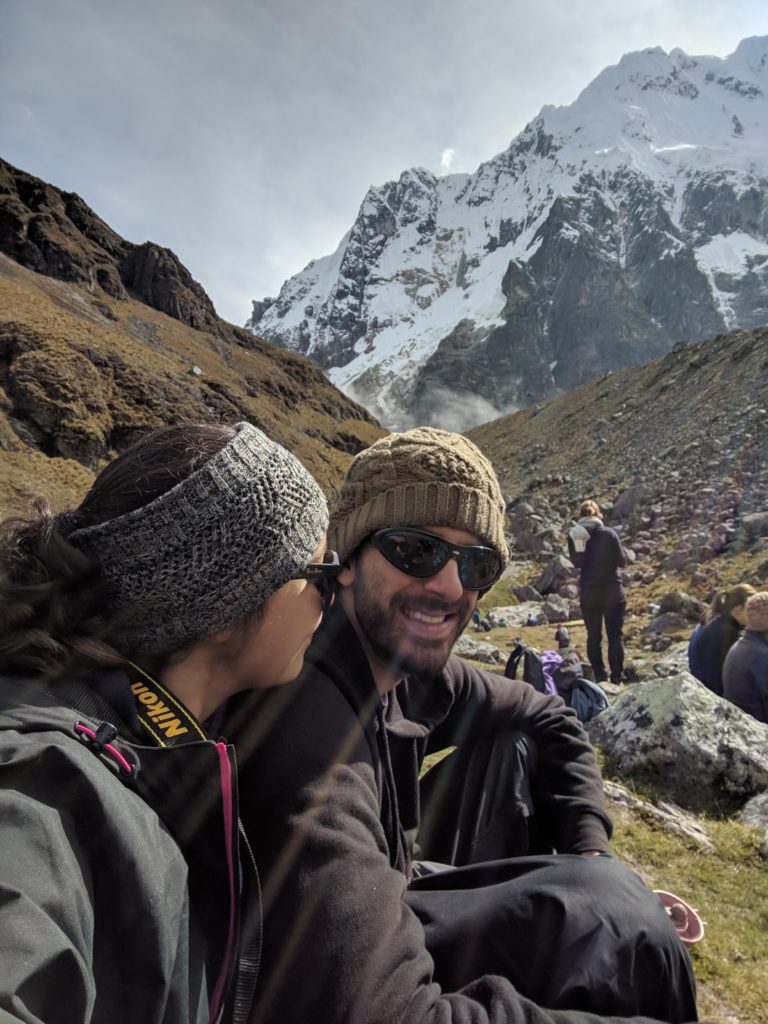
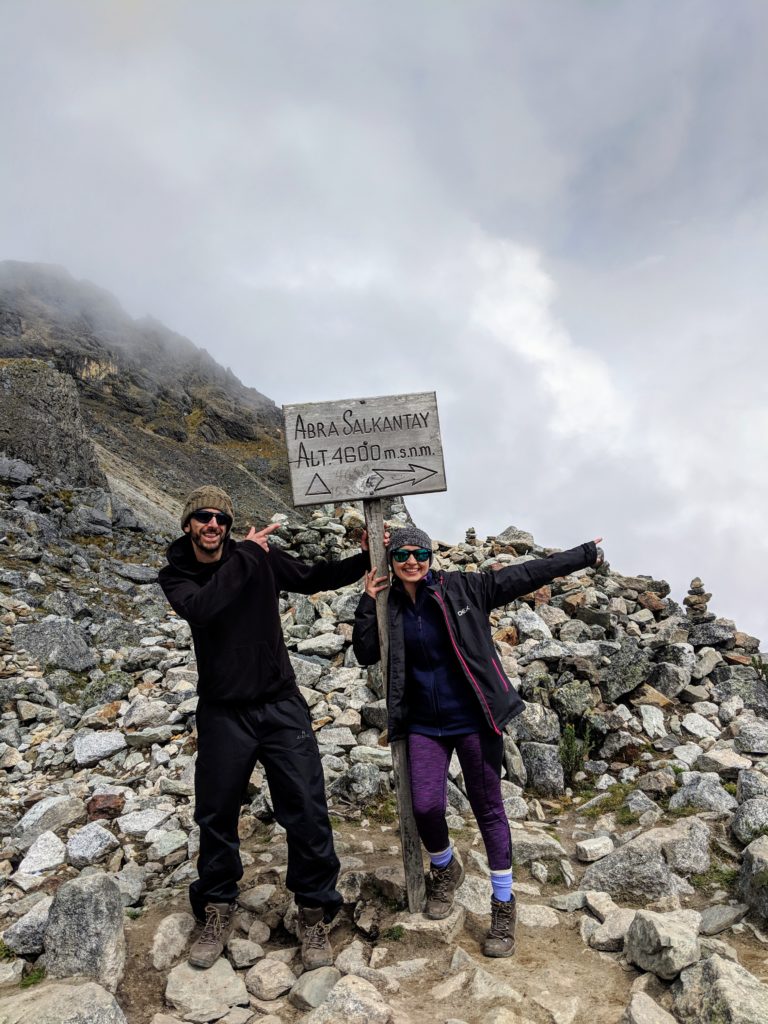
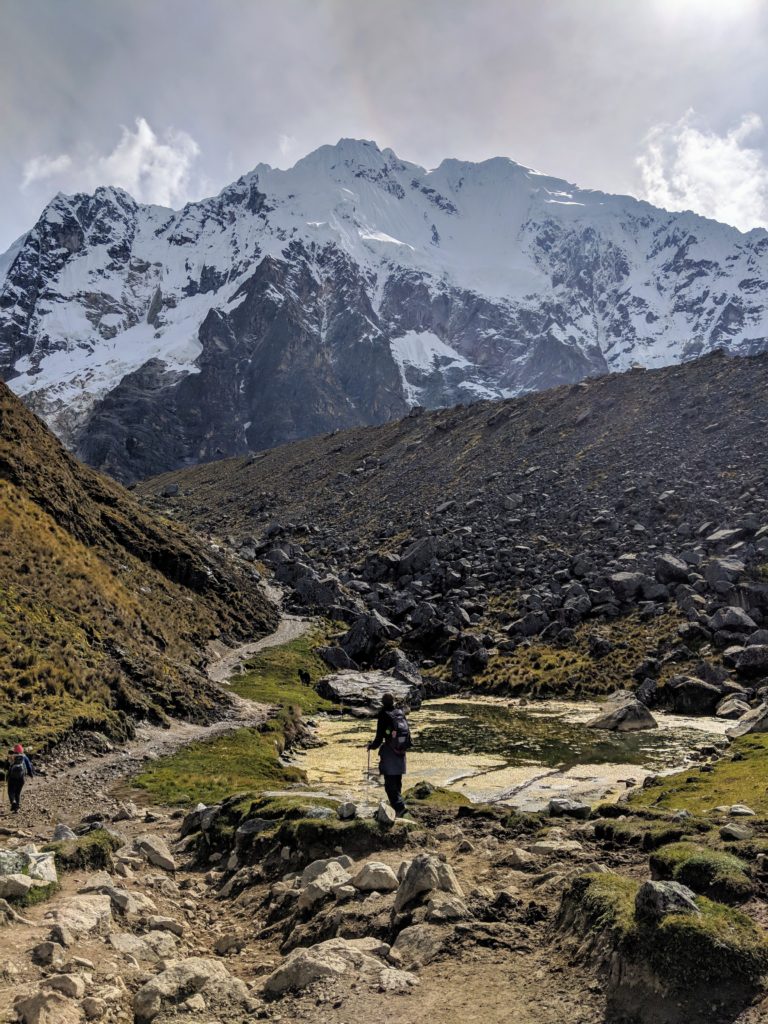
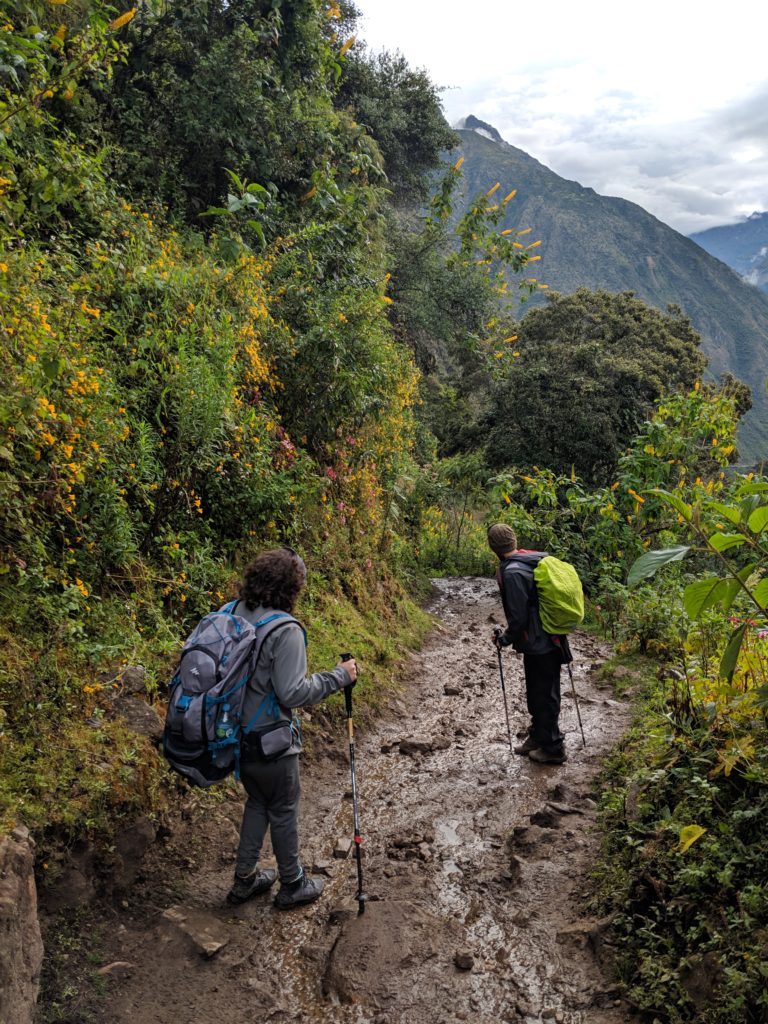
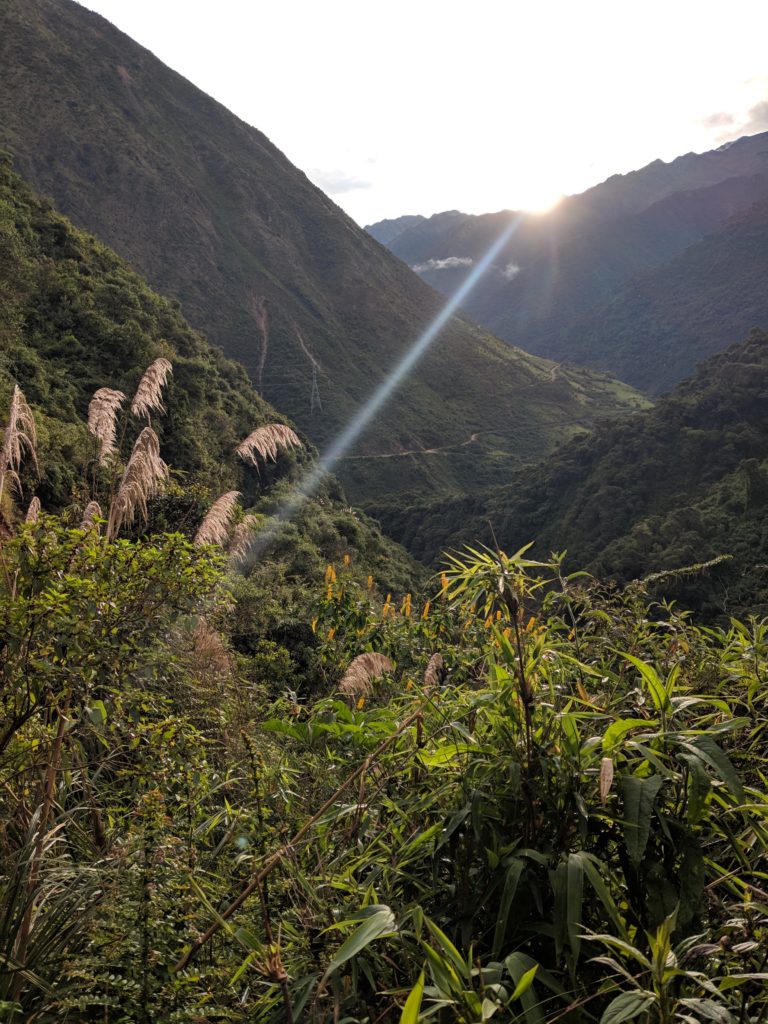
Day 3 – The last intense day of walking. There was a lot of vertical ascents early in the morning but at least we were at a lower altitude than the past couple of days. We stopped several times along the way. At the first break point one of the Brits saw a cute puppy and decided to play with him only to end up getting bitten several times. At the next place, Shri cleverly decided to play 3 a side football on a near full-sized pitch at altitude, playing uphill. This resulted in him being unable to keep up with the rest of the group on the trail and so he stayed at the back for a while.
Along the river we came across plants which the guides extracted an ink-like substance which they said the Incas used to use as warrior face paint. So naturally they decided the whole group didn’t look menacing enough and shortly after there we all stood with face paint all over. The girls were given nice, pretty patterns but the guys faces were butchered all over – luckily it came off later with a bit of water. Do we look scary in the pics?
We eventually arrived at Hydroelectric train station and finished off with a 2-and-a-half-hour trek to Aguas Caliente, the village at the base of Machu Picchu. The entirety of this trek was along the railway track and at some points we even had to walk on the track where it acted as a bridge over the river. The way people ambled along by the side of the track so casually just had us contrasting how this could be in the UK – we decided it probably would never be allowed in the UK due to safety and would likely be fenced off with ‘warning’ signs all the way along. But we had fun putting coins on the tracks as trains would pass and taking the flattened coins back as souvenirs.
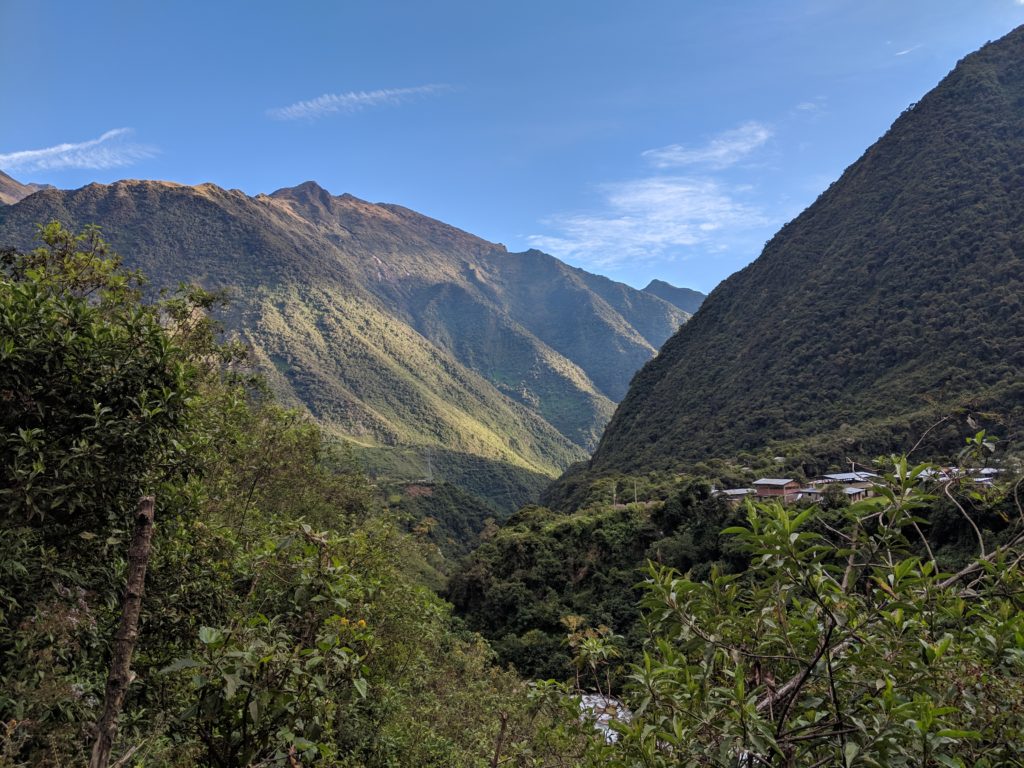
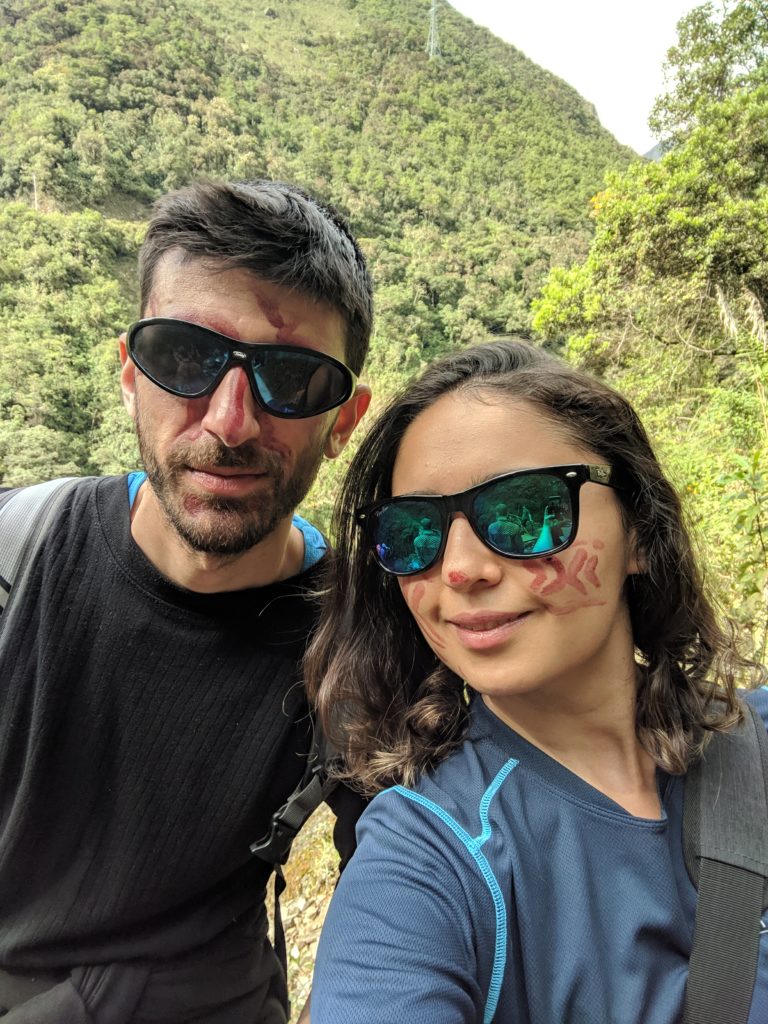
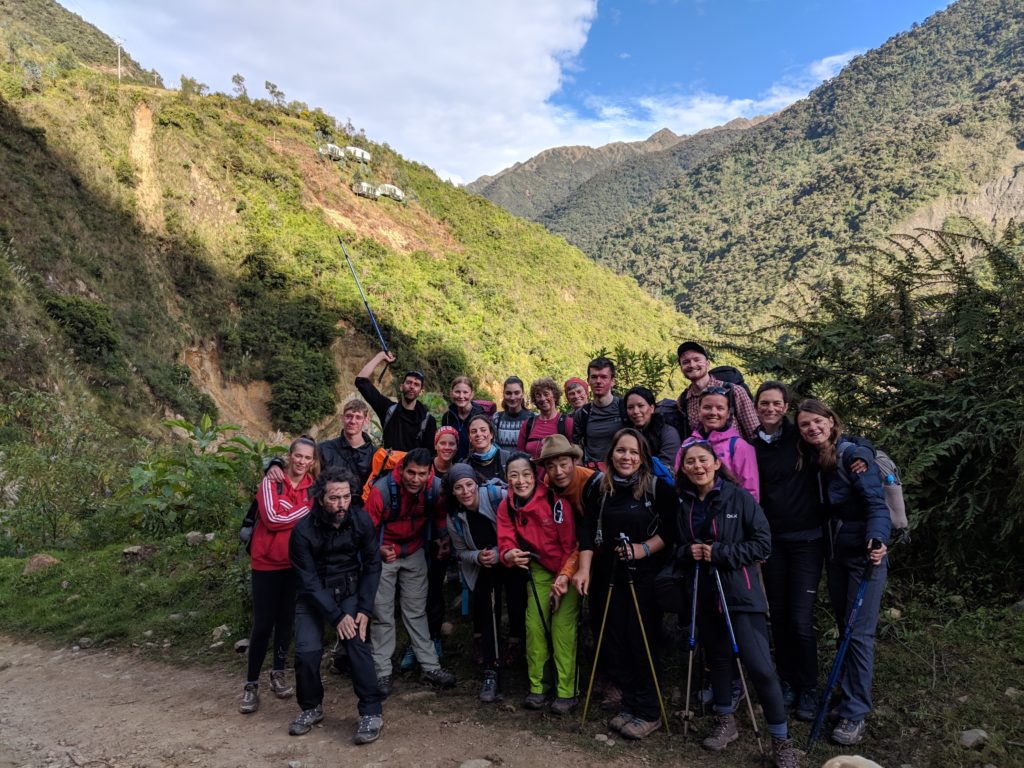
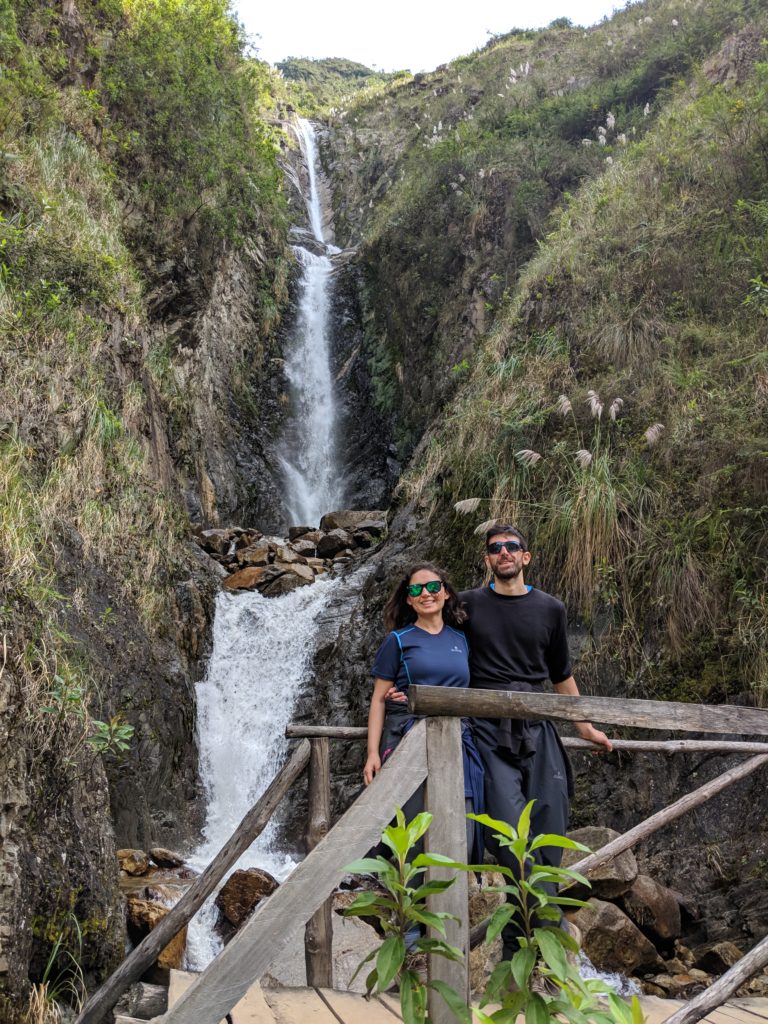
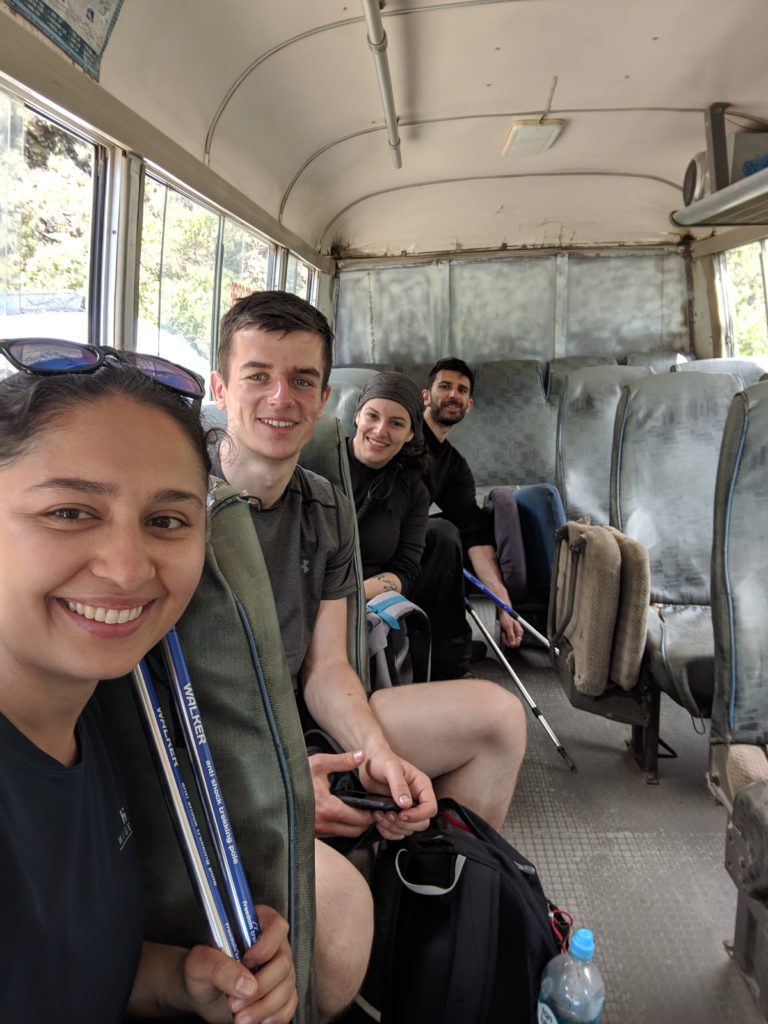
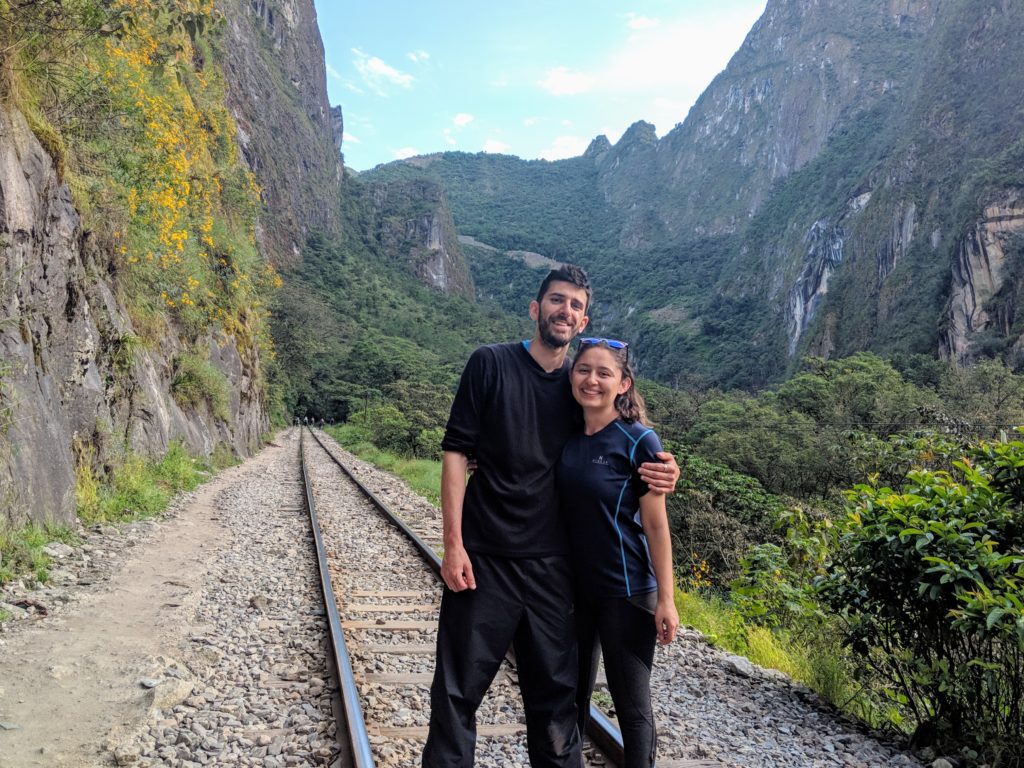
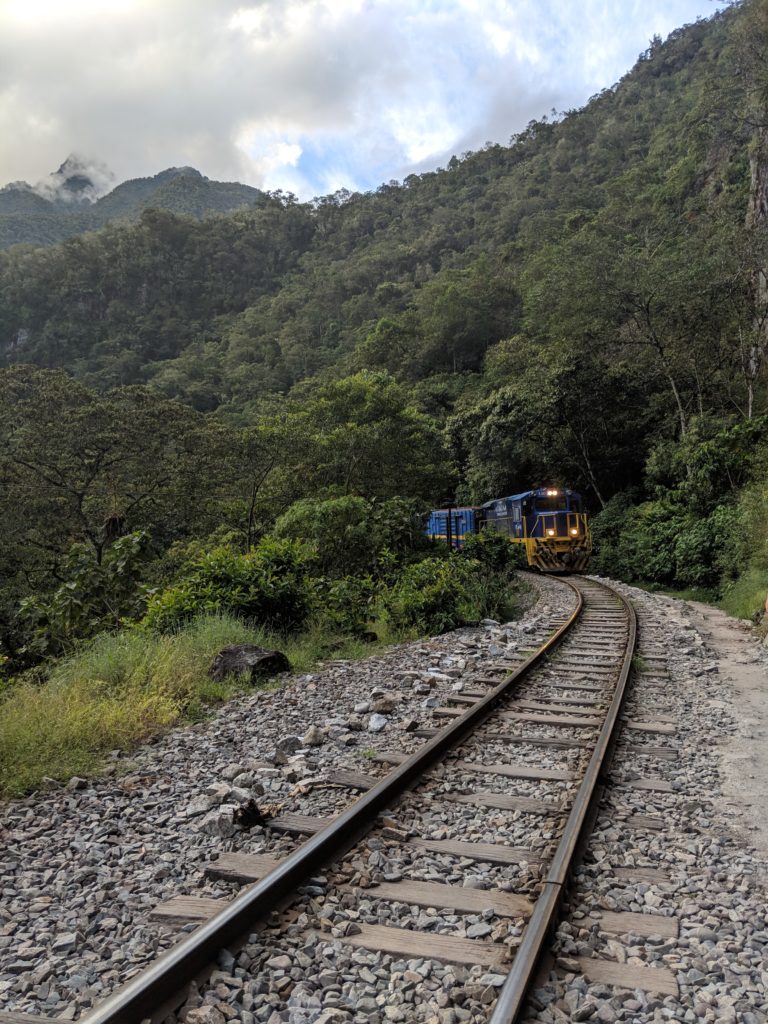

Machu Picchu – Well this what we’d been waiting for, our 6th wonder of the world and the focal point of the trek. We took a bus from Aguas Caliente up to the top of Machu Picchu (you do have the option to hike up, but we were a bit tired of constantly walking at this point). We arrived nice and early, but it was still packed at the entrance. For those interested, you can also get a stamp (for free) in your passport to show you’ve been (in case the photos are not evidence enough!).
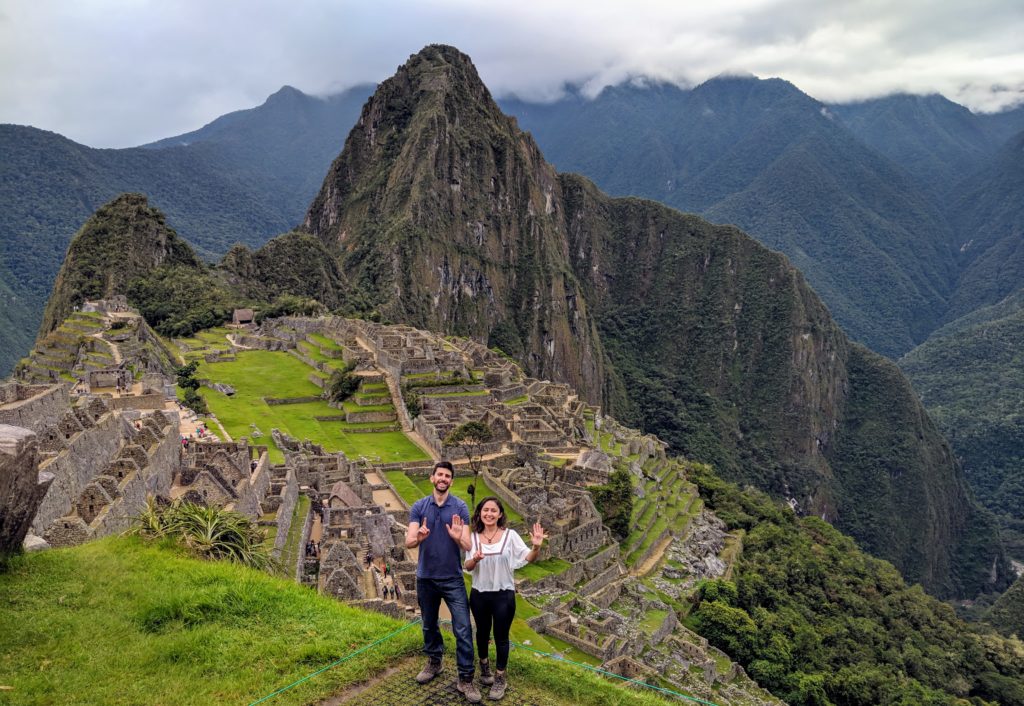
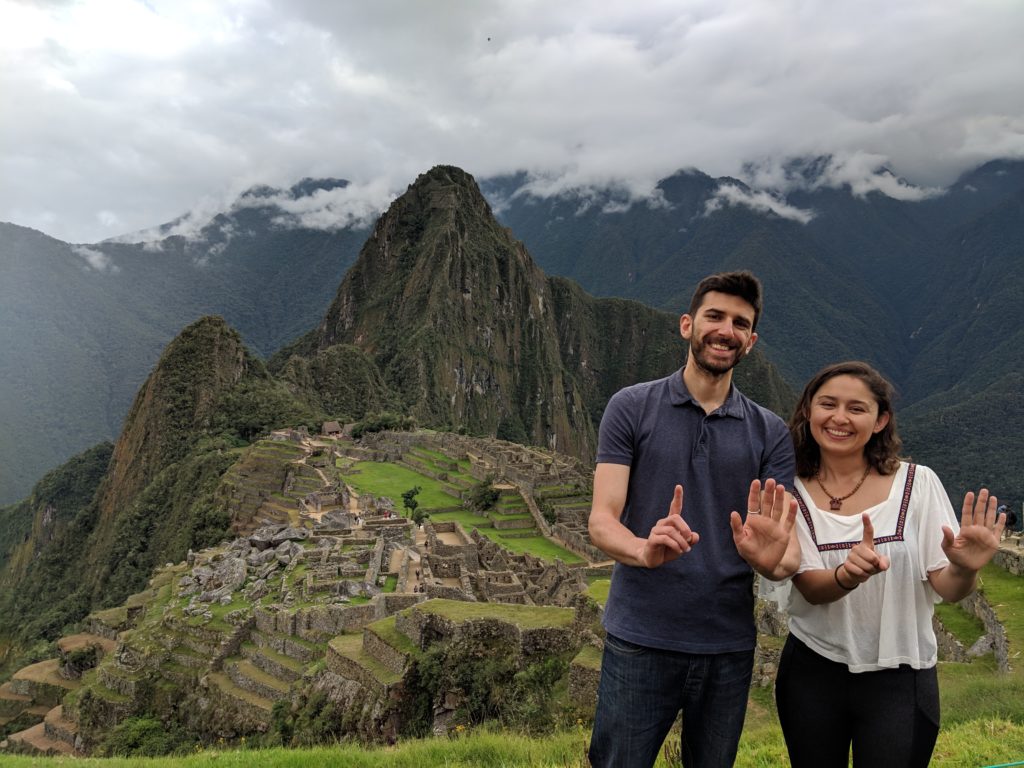
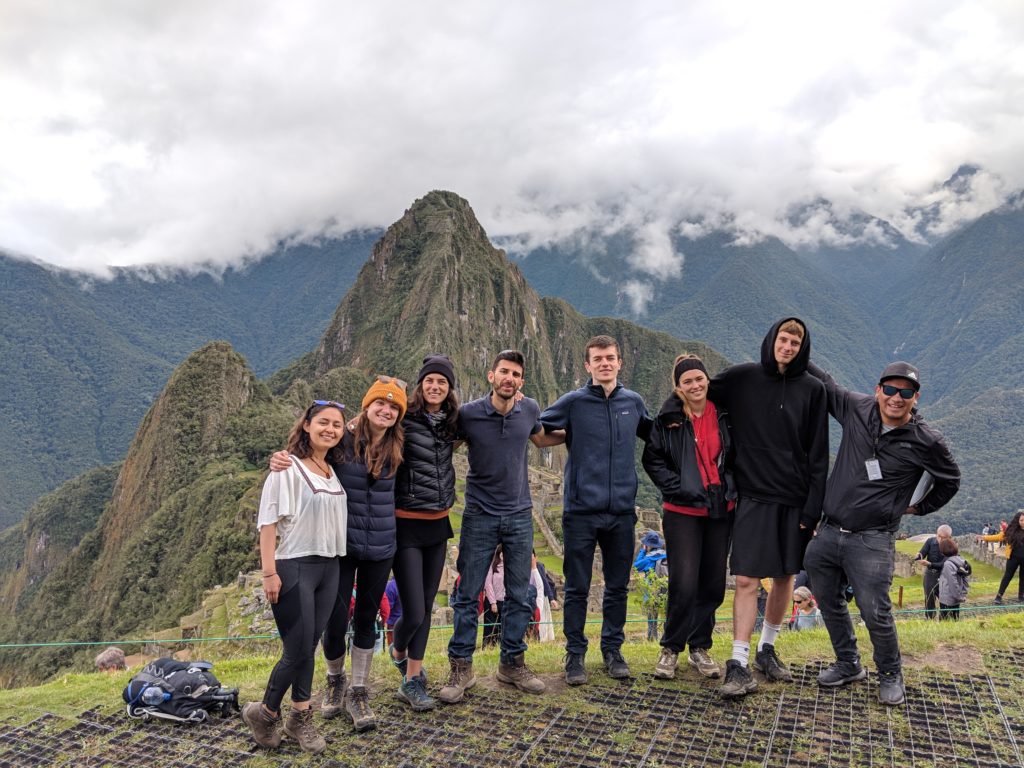
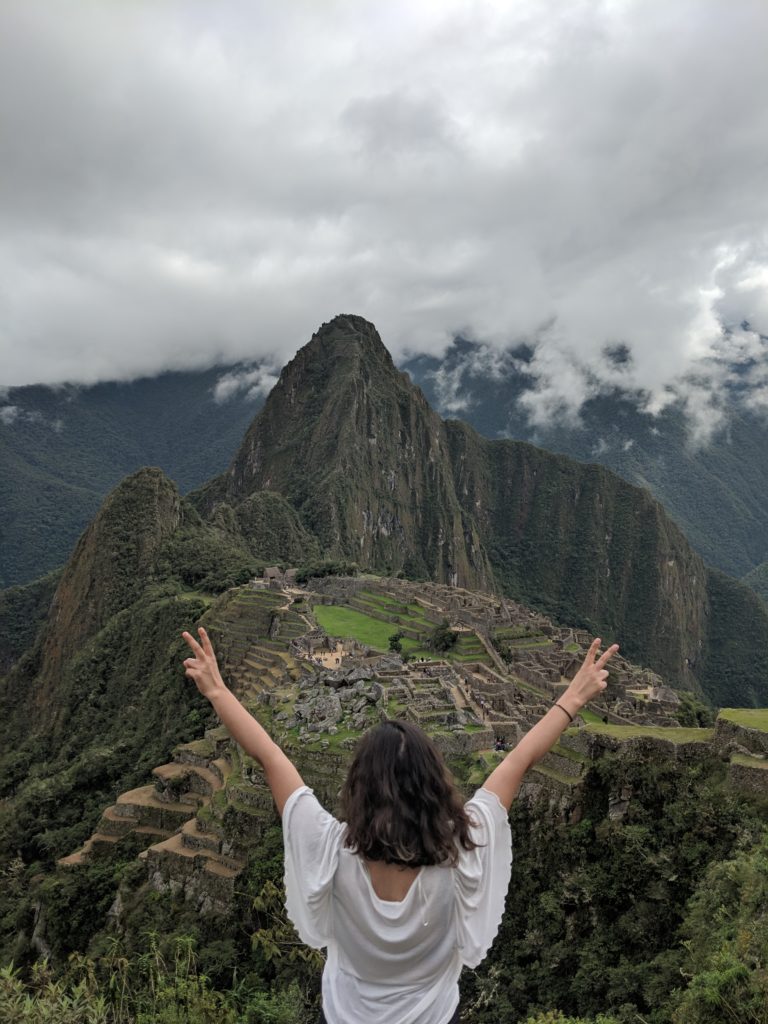
The views were stunning and seeing how the clouds moved across the face of the ancient ruins was majestic in itself. Our tour guide gave us an overview on the history of Machu Picchu- luckily this Inca citadel, built in the 1400s had not been discovered by the Spanish during the colonial period and was deserted by the Incas which meant that it never got destroyed and lived on to be introduced to the international community in the early 1900s.
We walked along the Inca Bridge and then up to the Sun Gate which had even better views of the Citadel. We parked up there for a good 20+ minutes in order to get a nice time lapse clip of the clouds rolling over the ruins to great effect (although it did start to rain a bit). Getting down was not so easy as the queues were massive by mid afternoon for the buses and we opted not to hike down. We concluded that so far this was our favourite wonder of the world…..
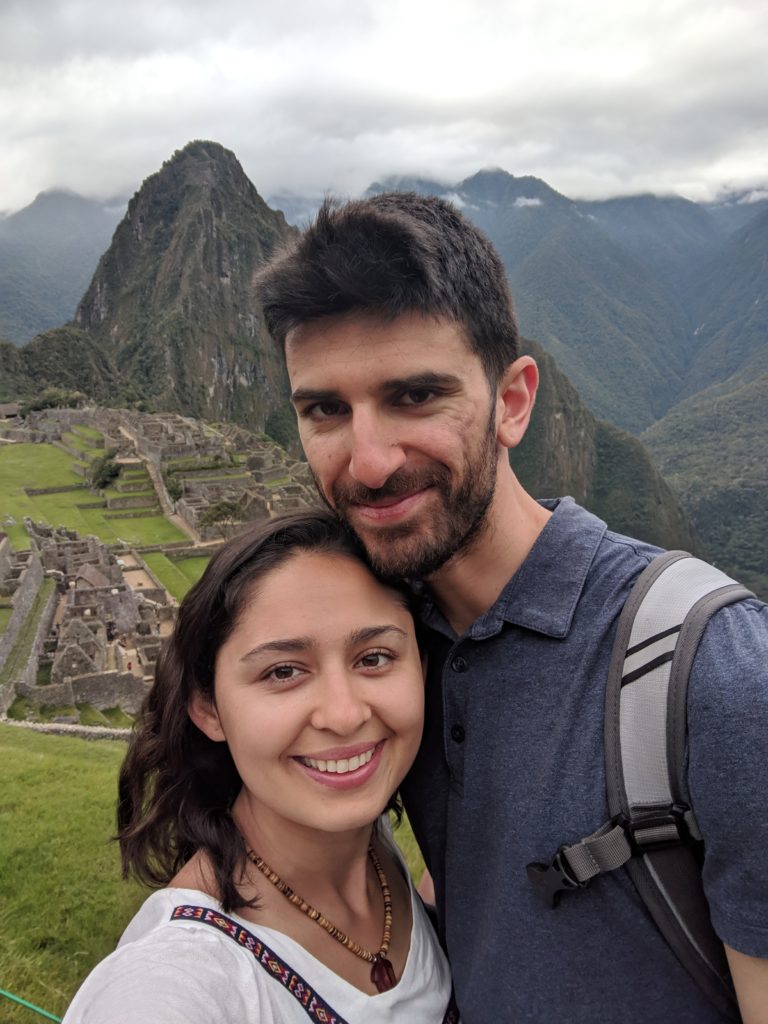
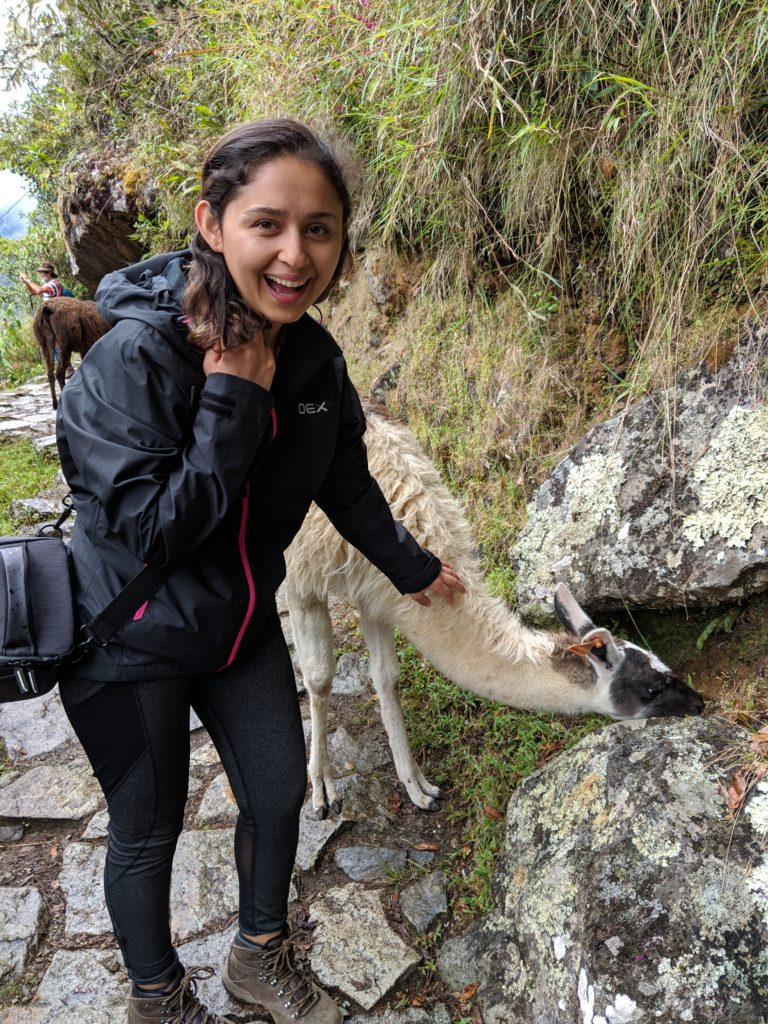
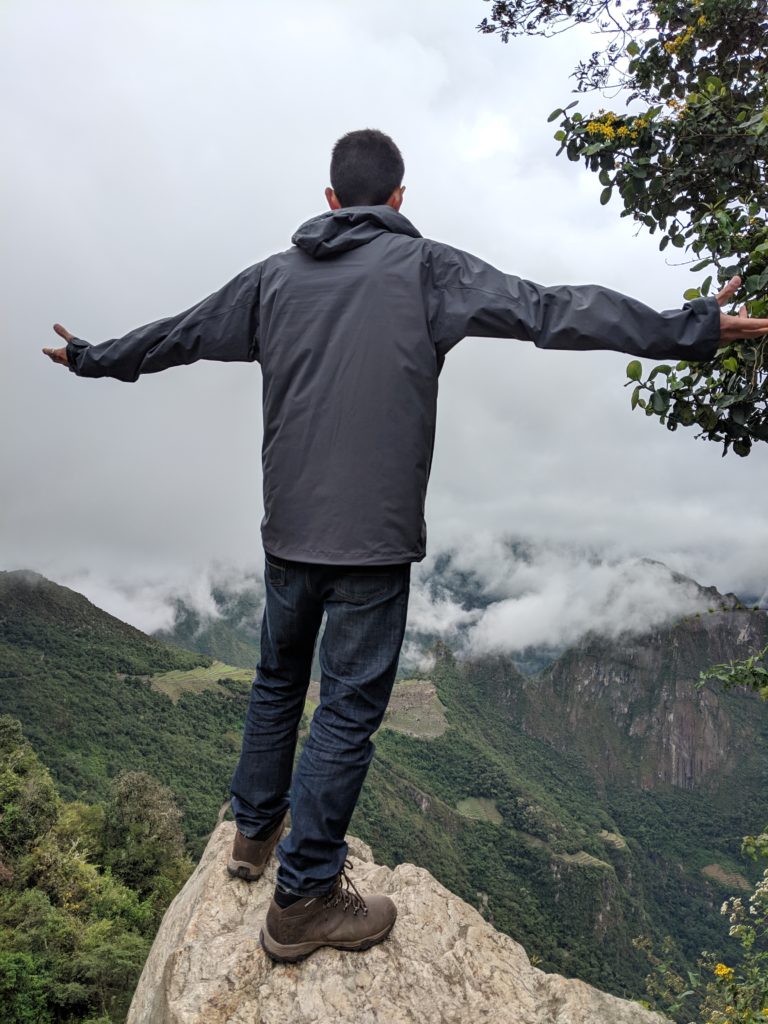
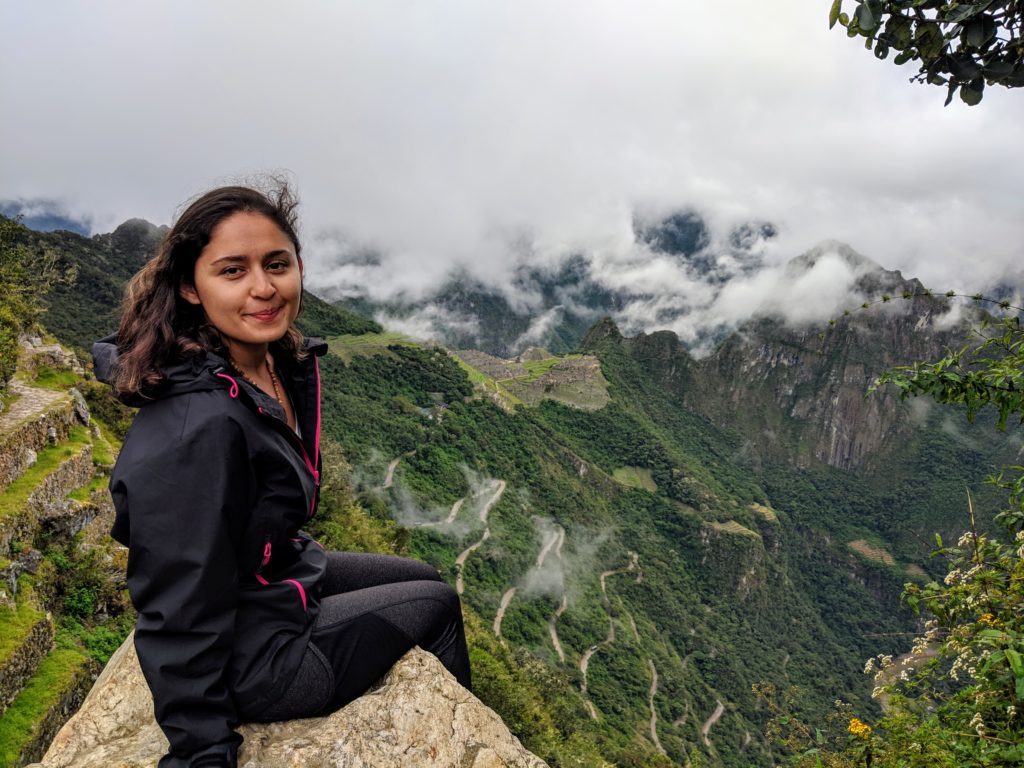

Well, next stop Bolivia, but we had a very tight schedule to get back to Cusco by train from Aguas Caliente before taking several buses and a boat to get to La Paz.
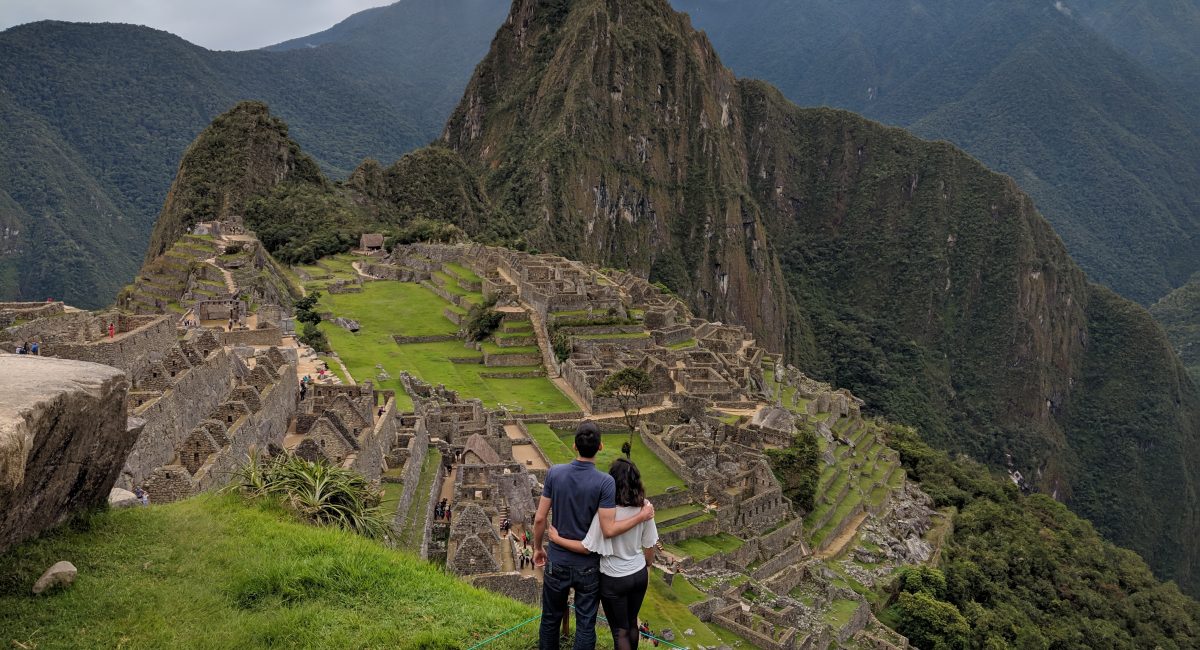
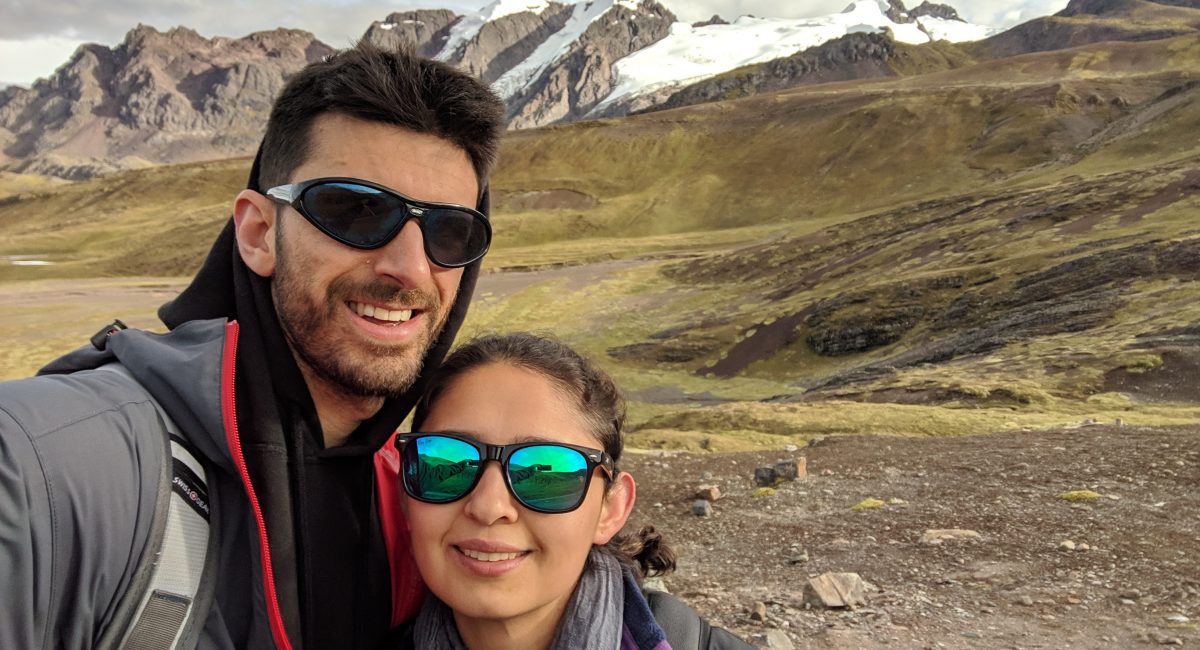
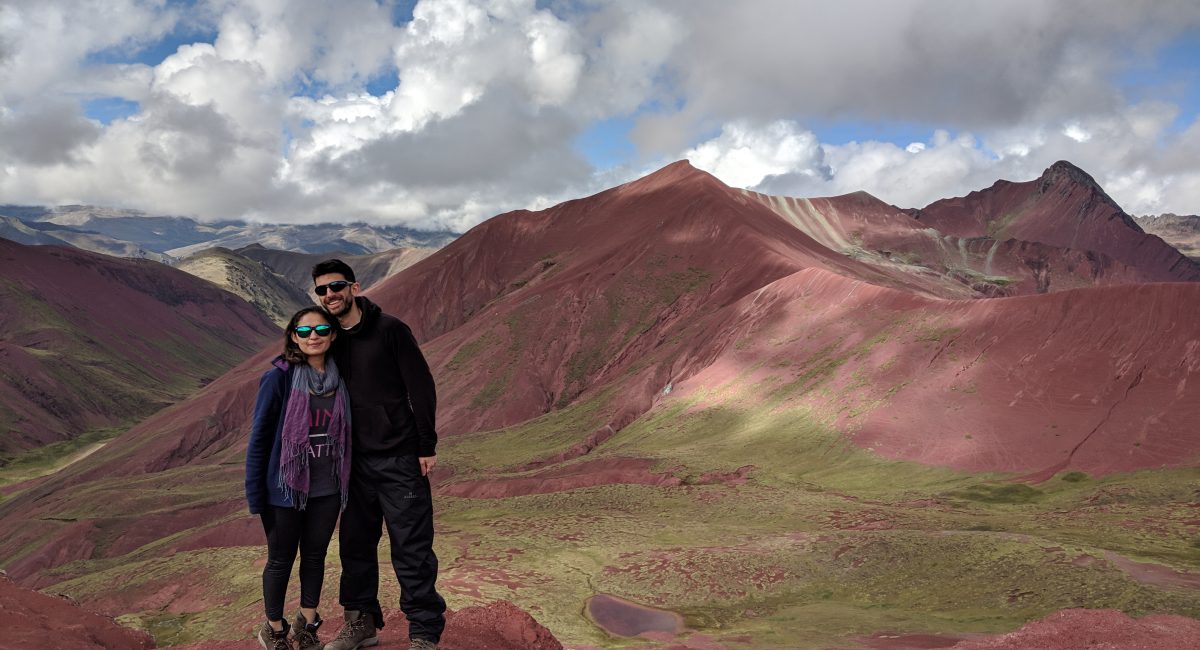
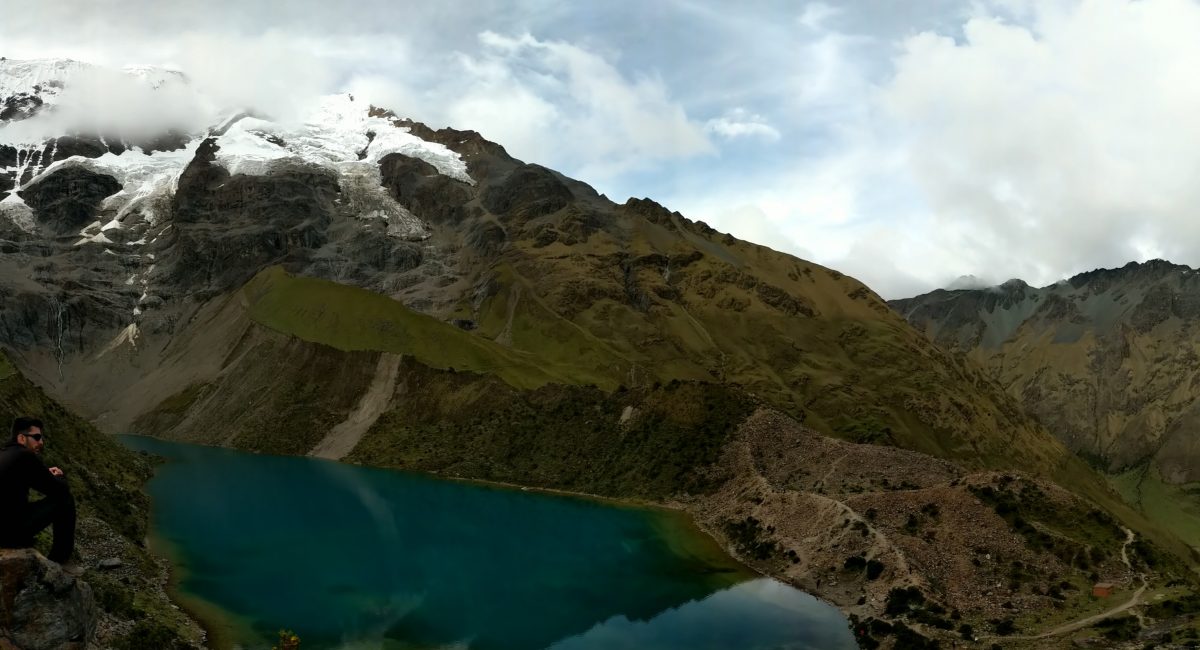
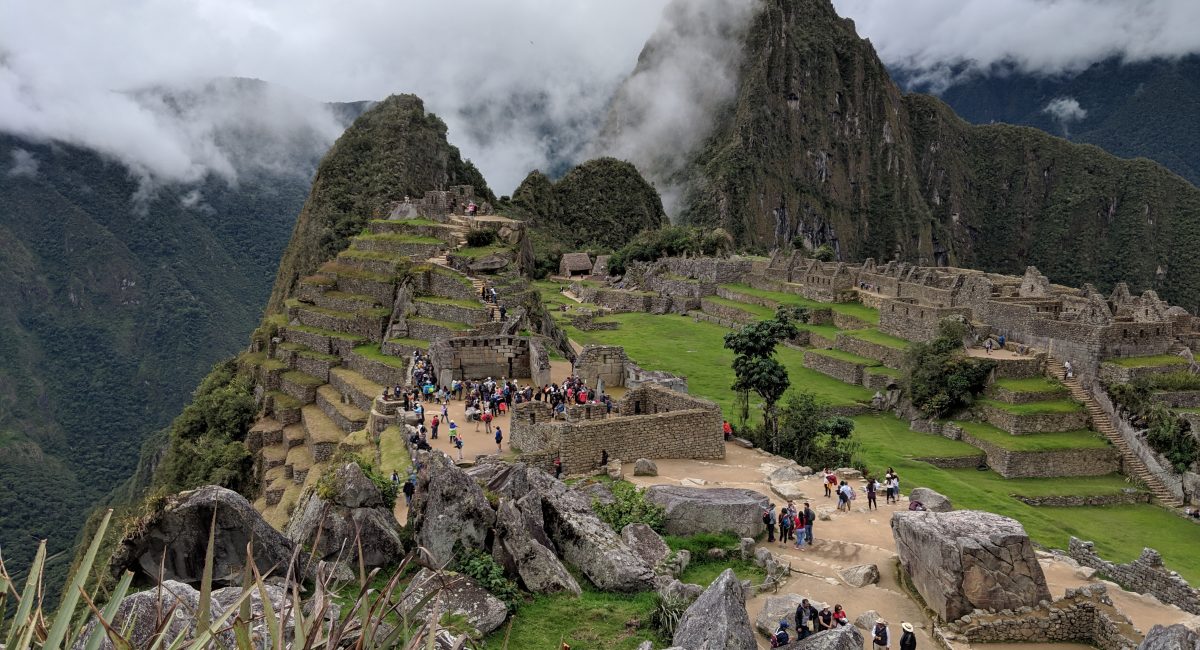
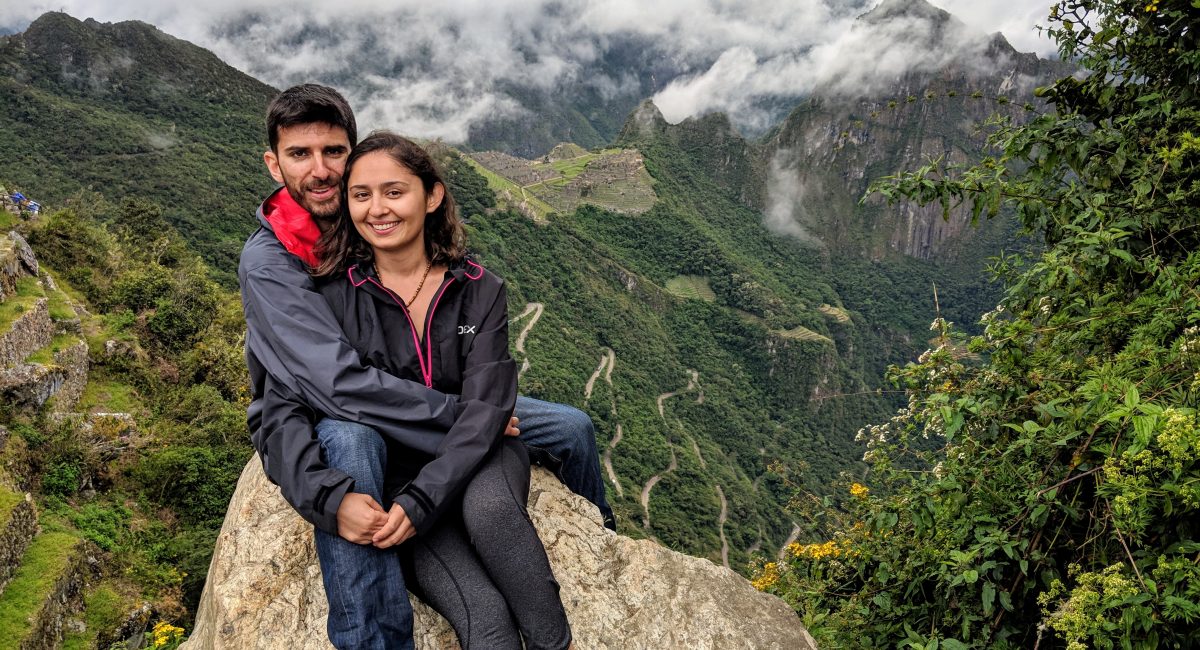
Hans D Wolfstaedter
31 Jan 2020Thanks again for an interesting report. Firuza gets always prettier! More of this, please!
shirishj
1 Feb 2020Thanks Giani. Glad you are still enjoying the reads and stay tuned for Kenya Safari & India coming soon!